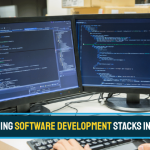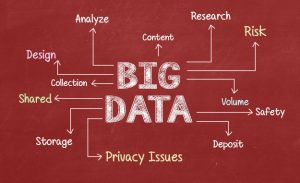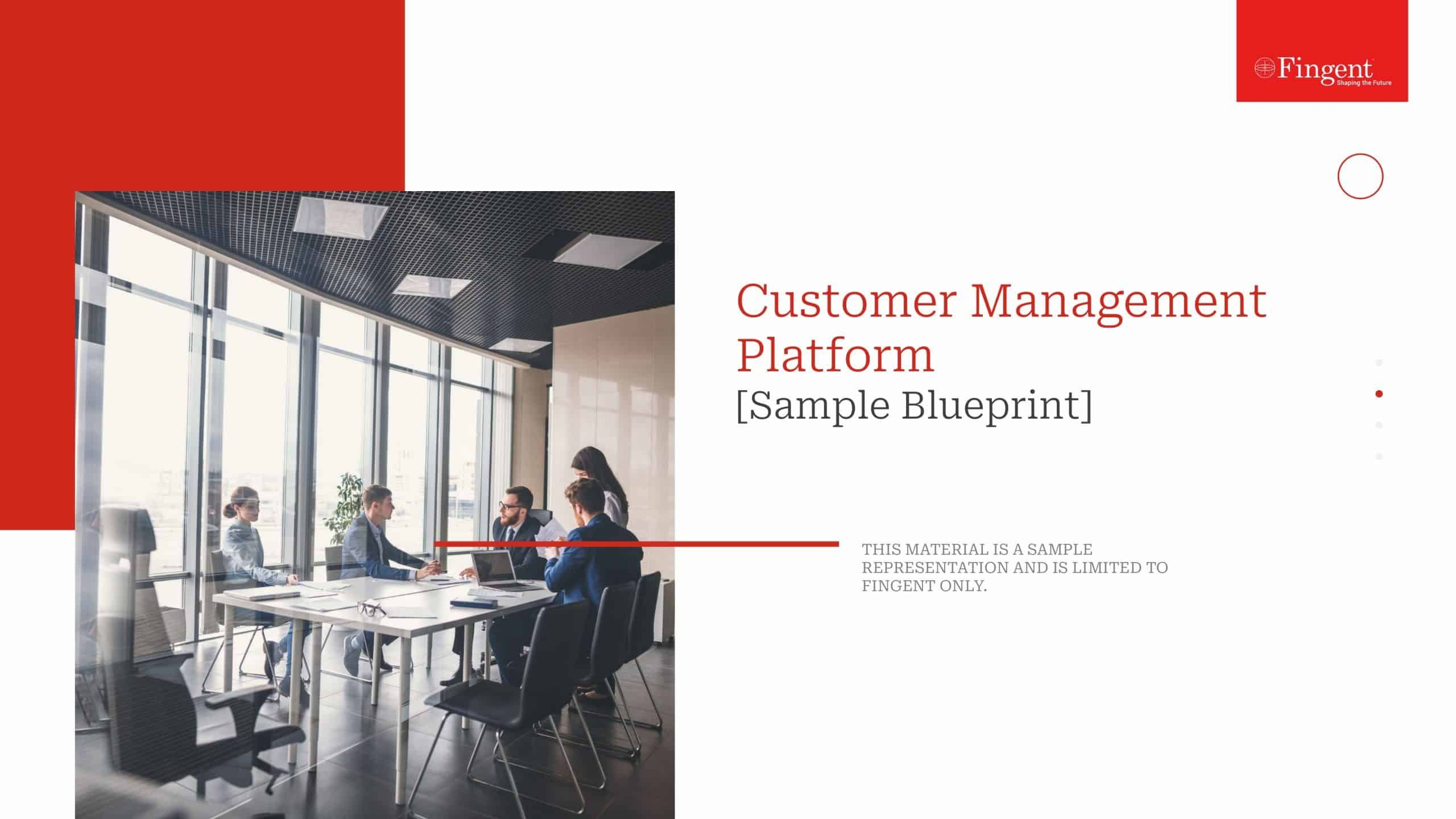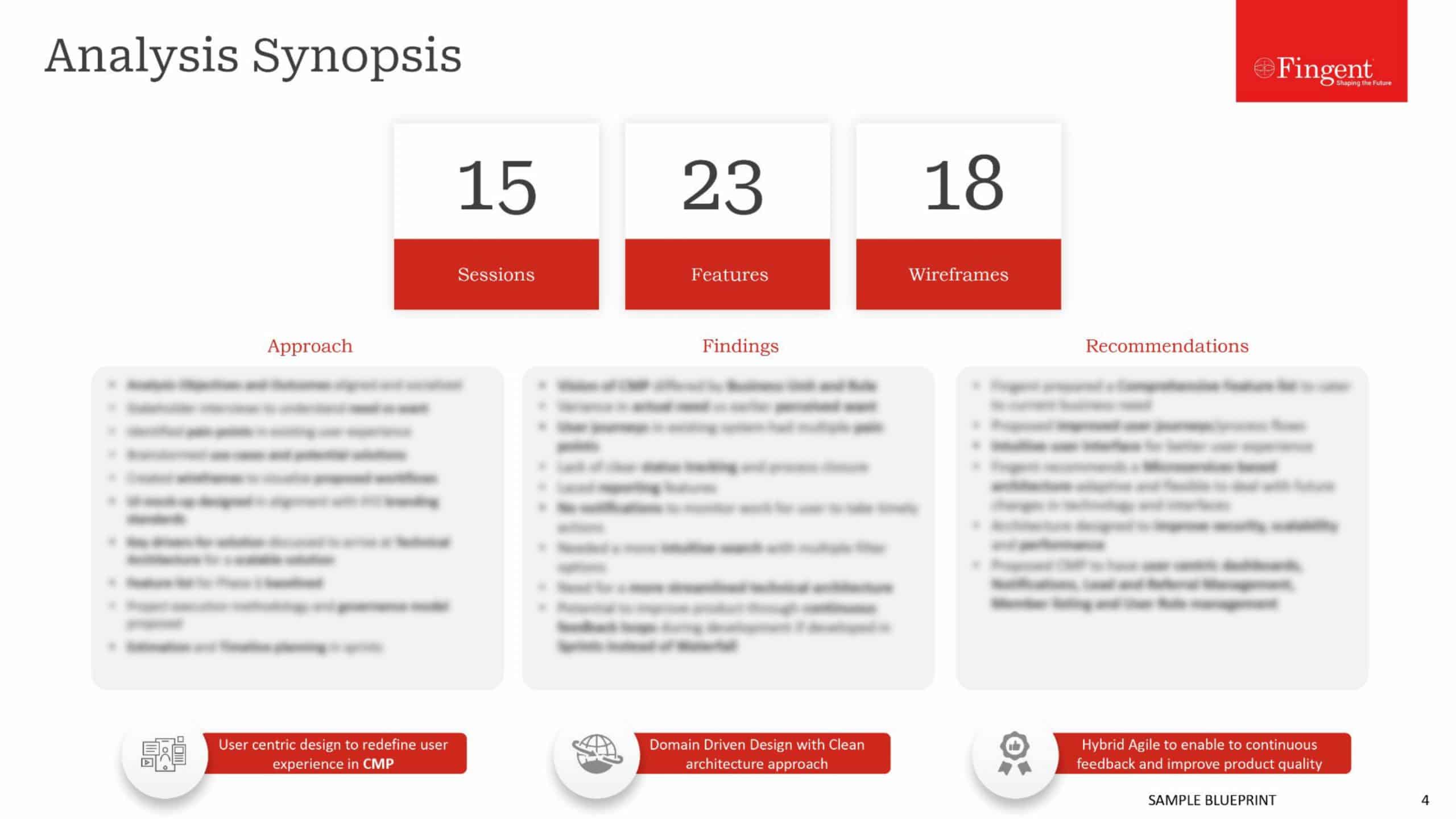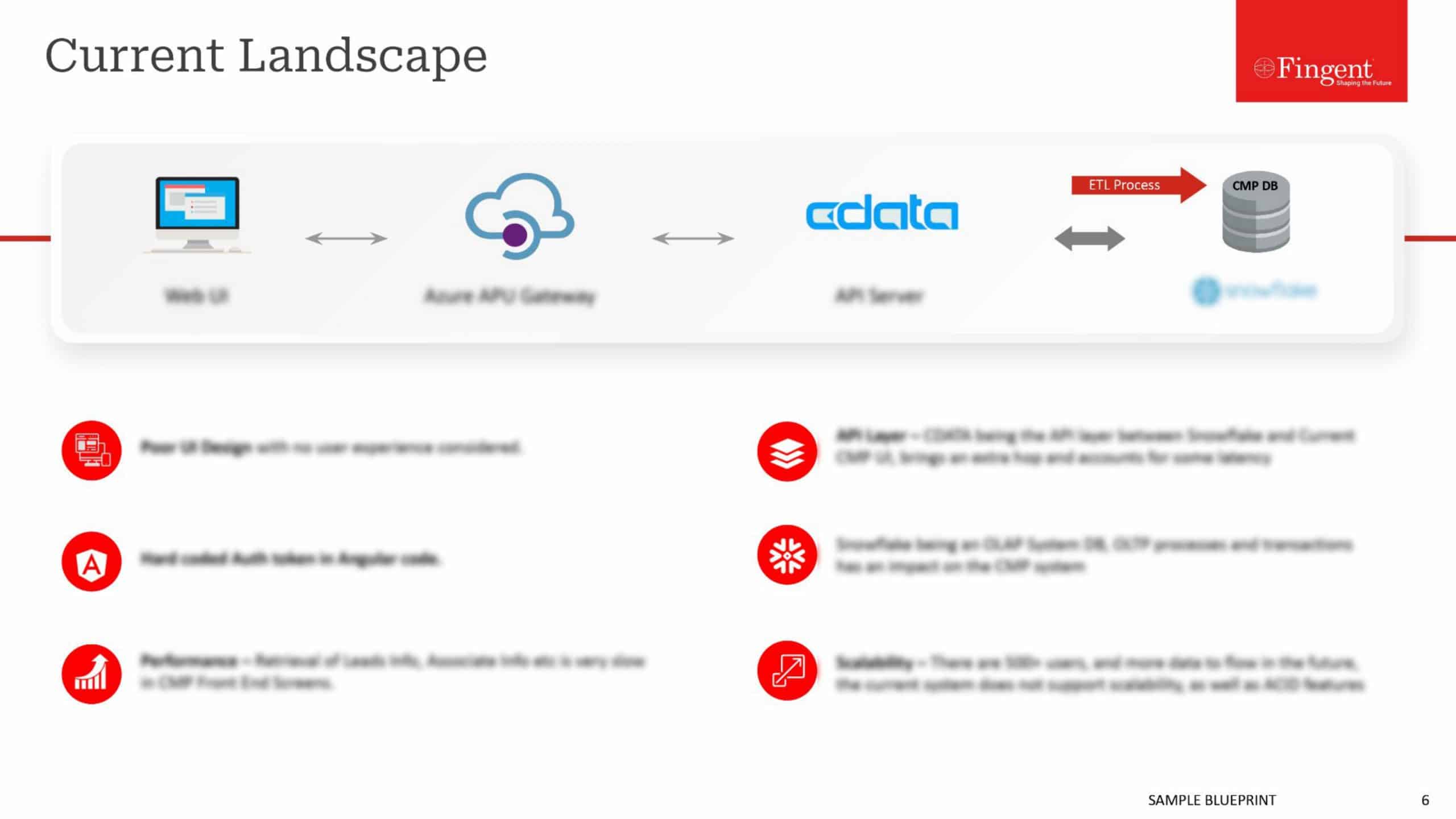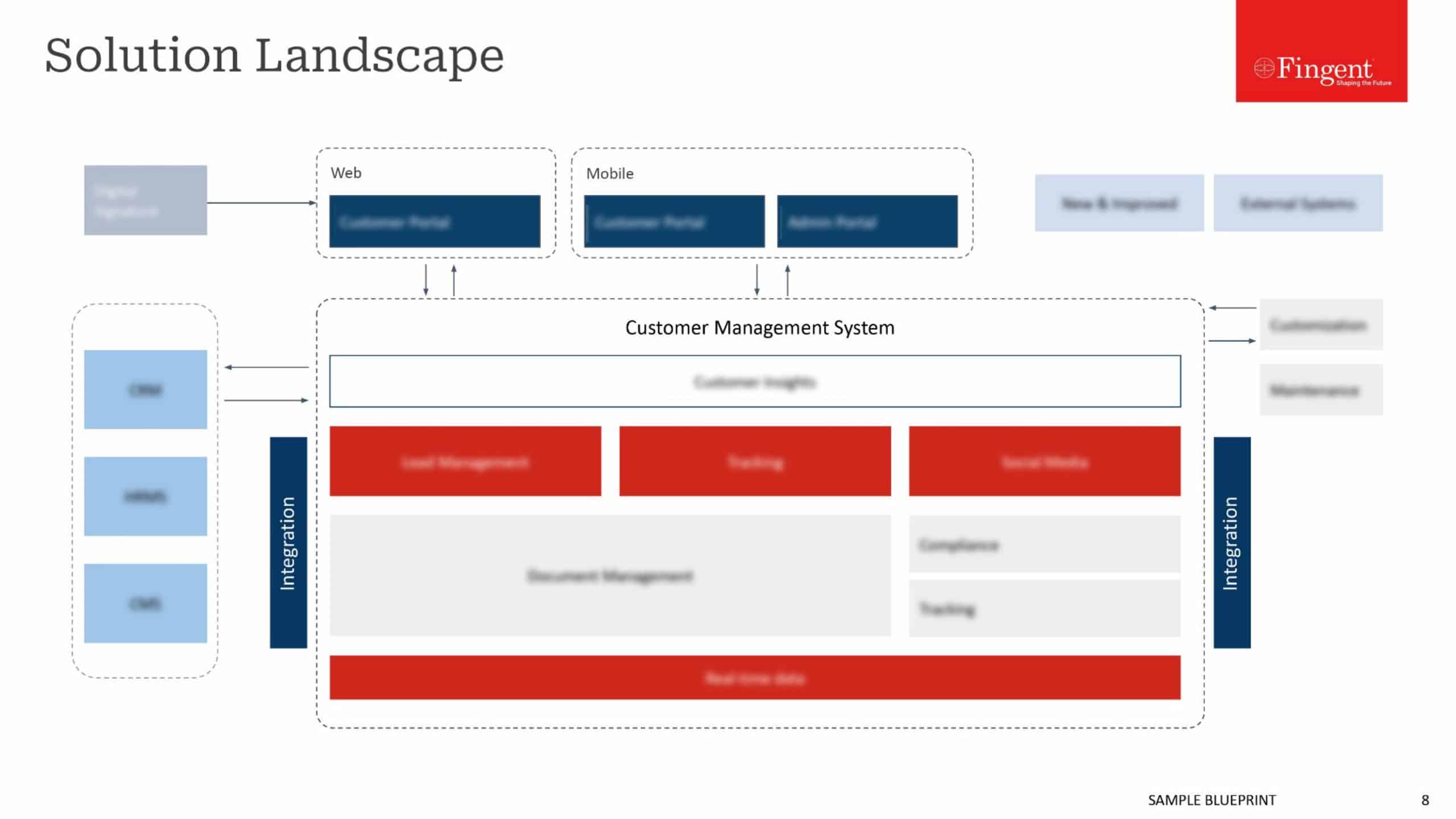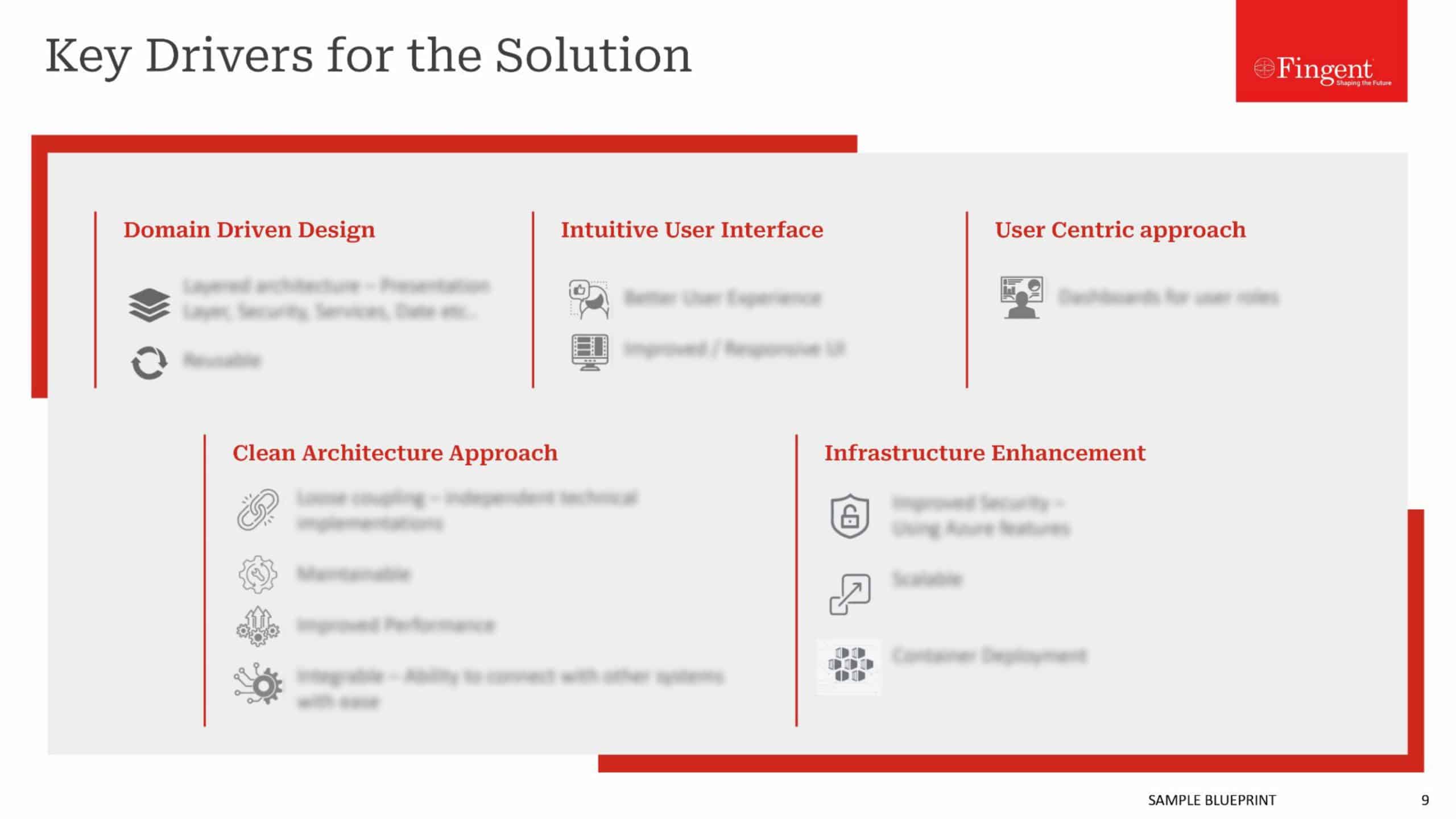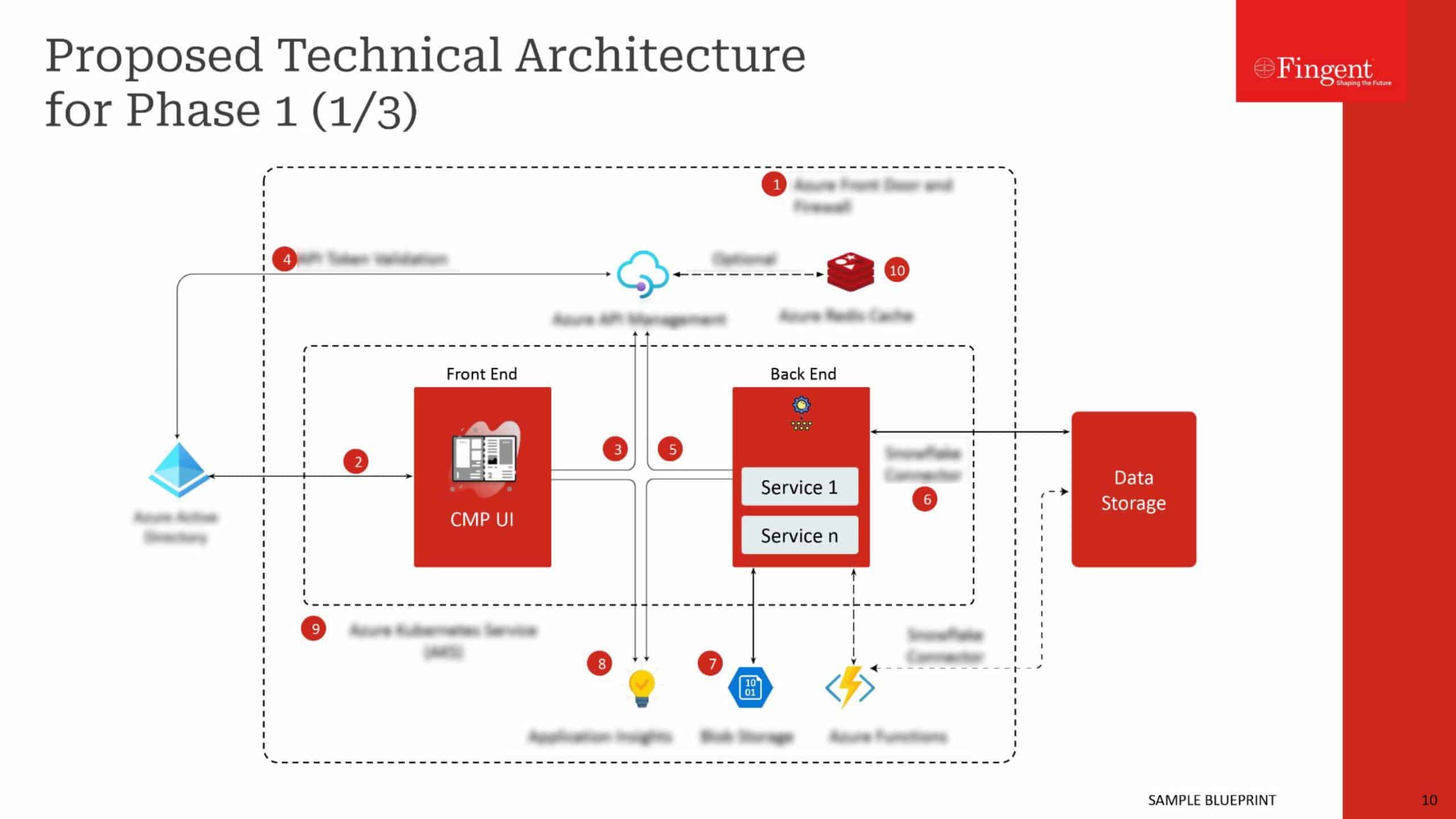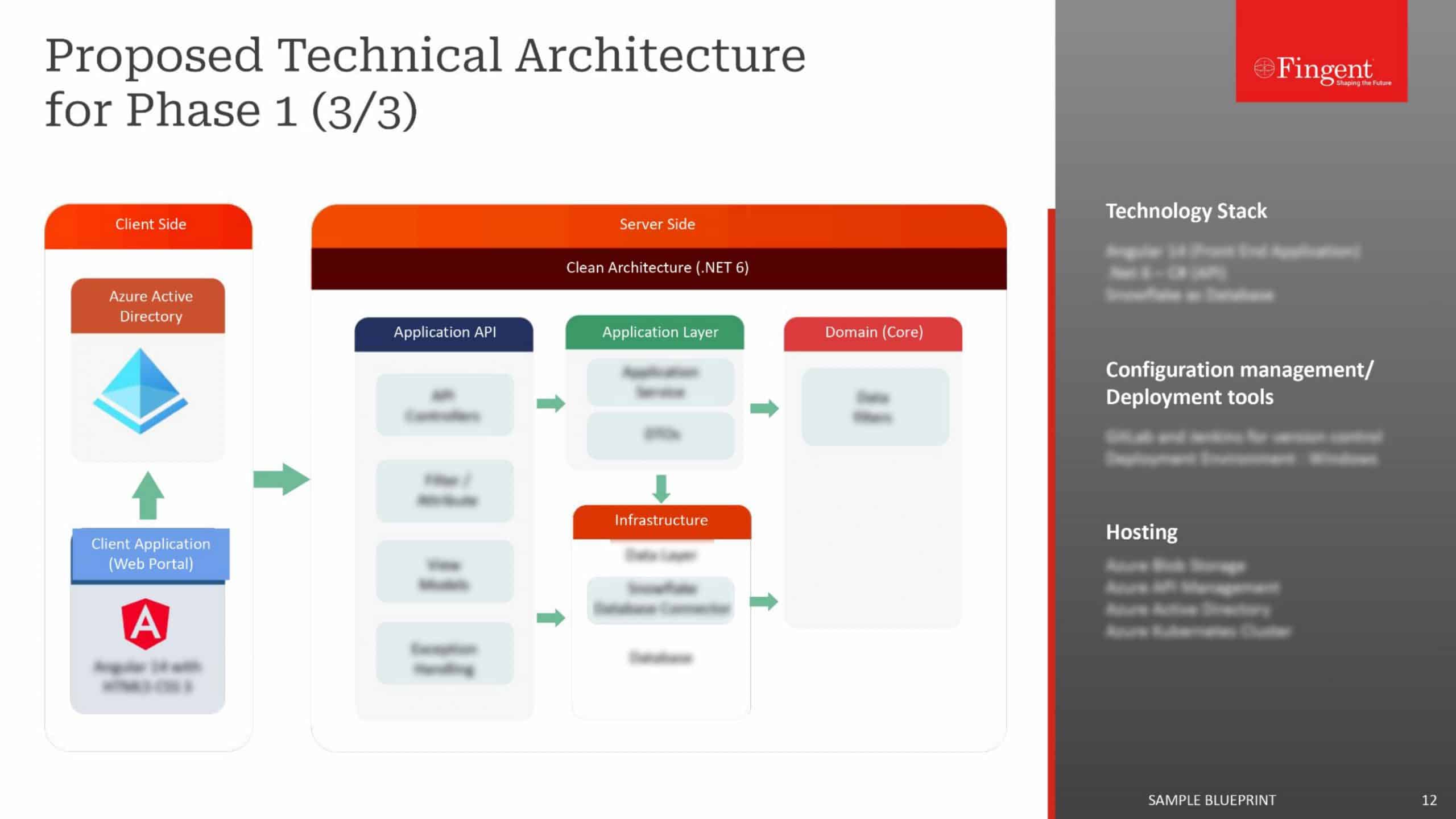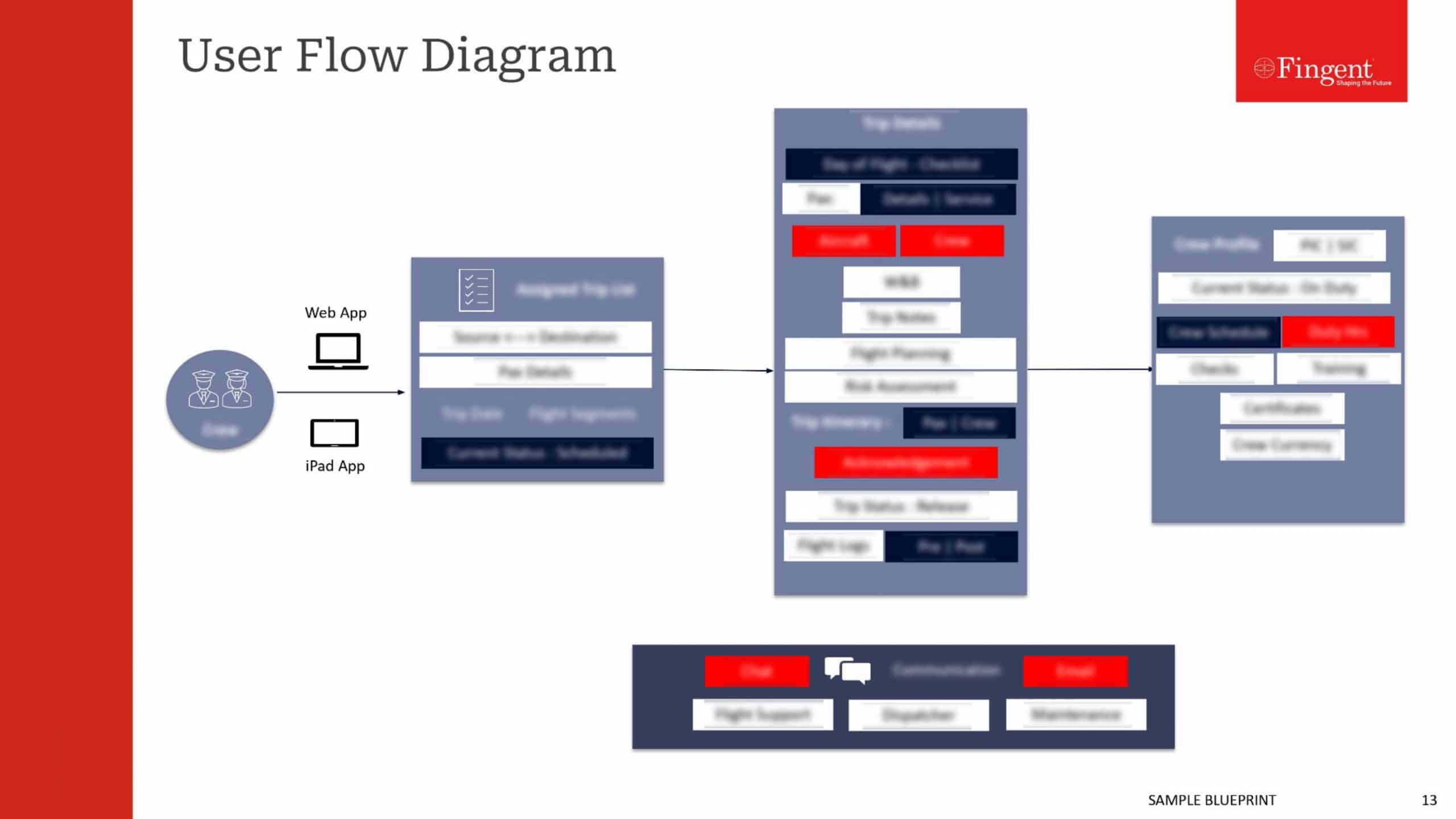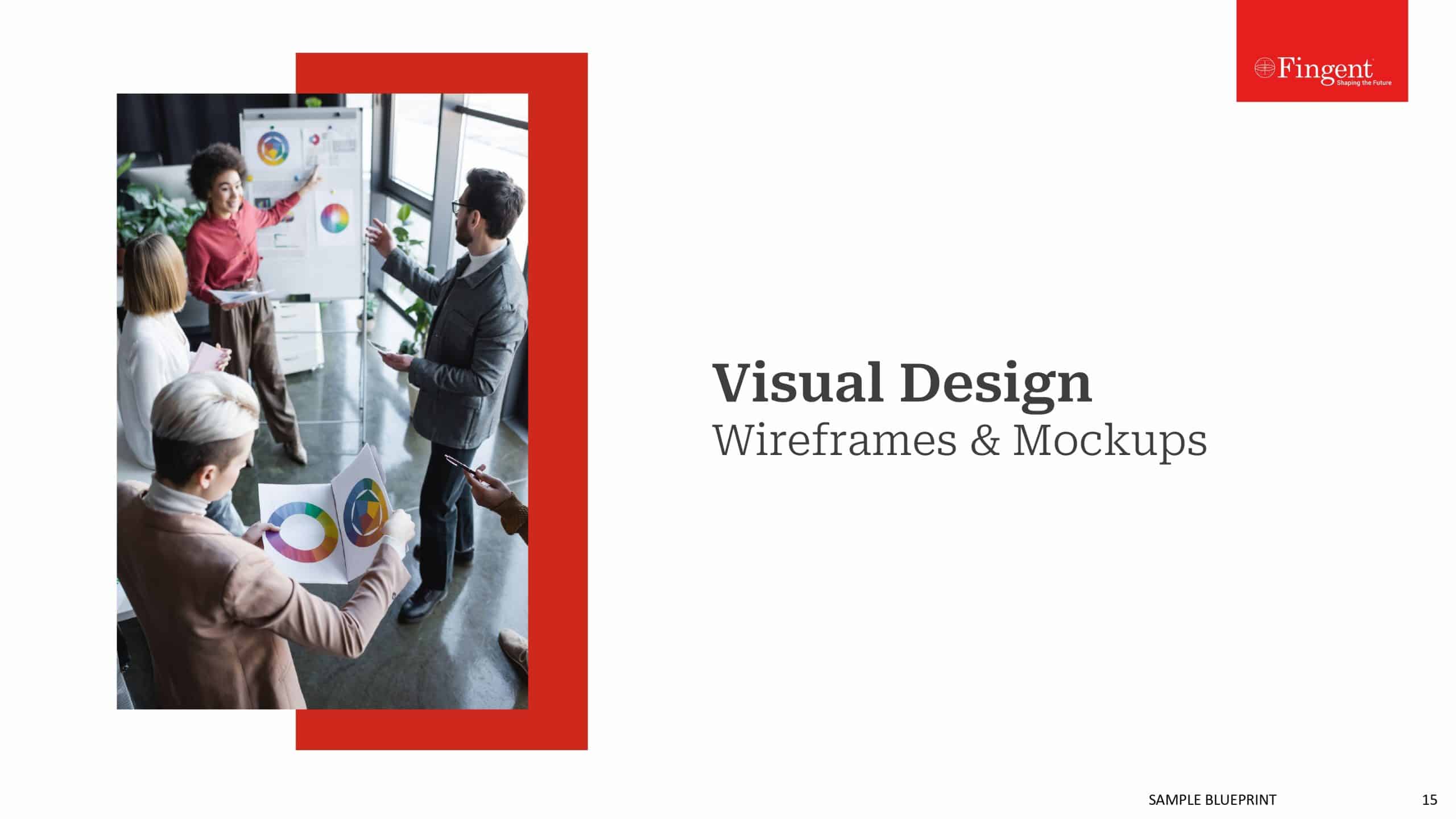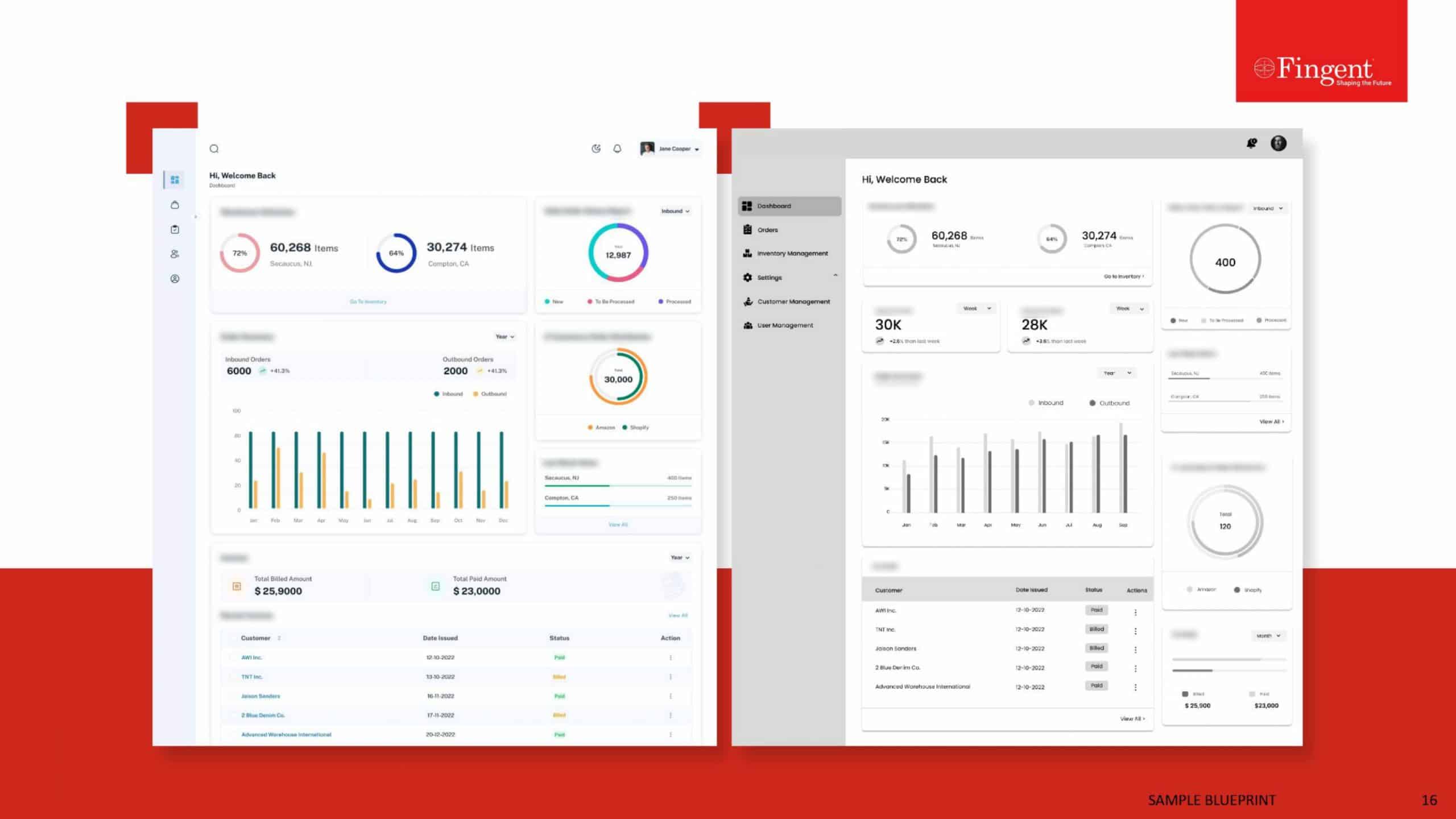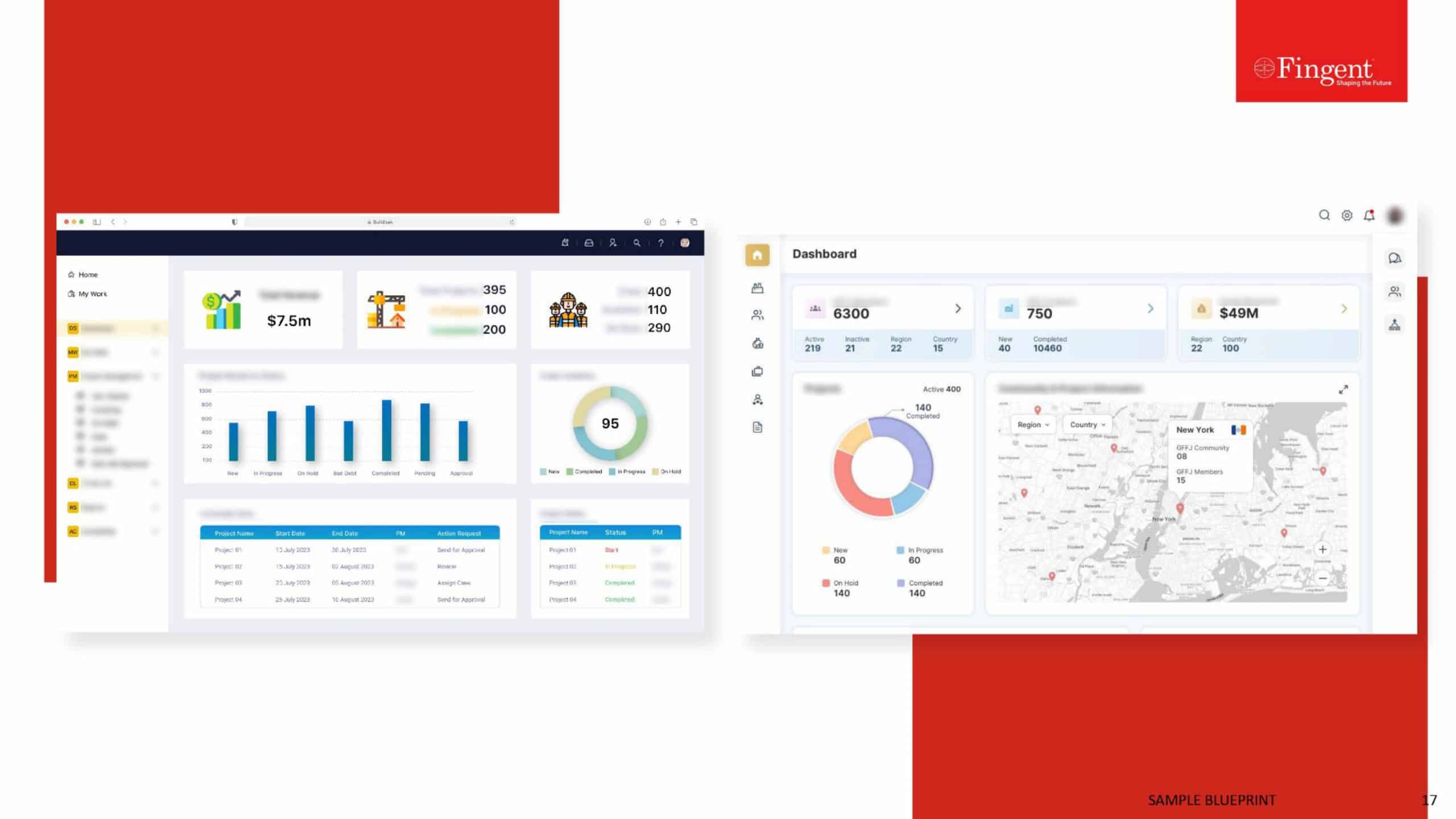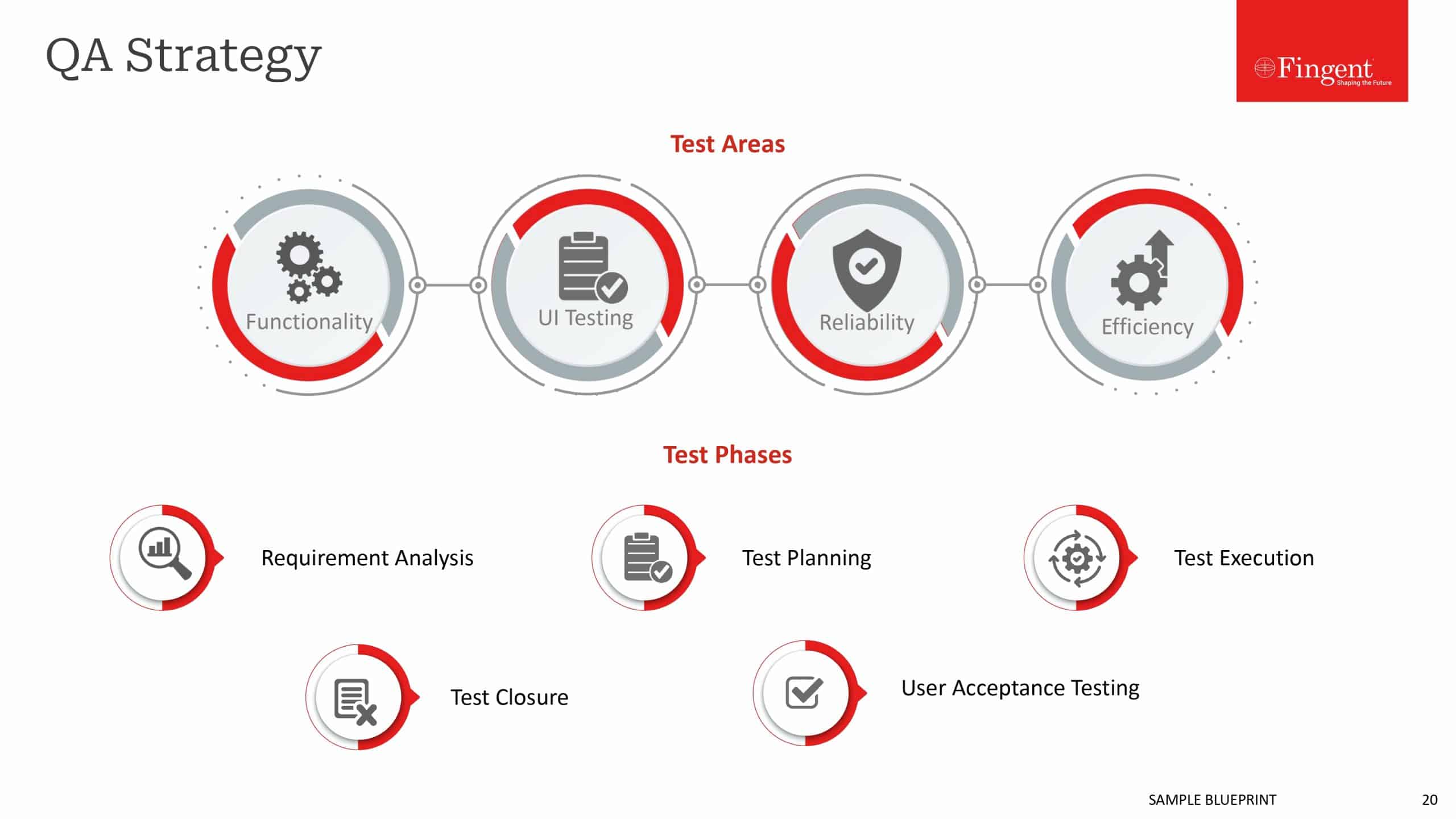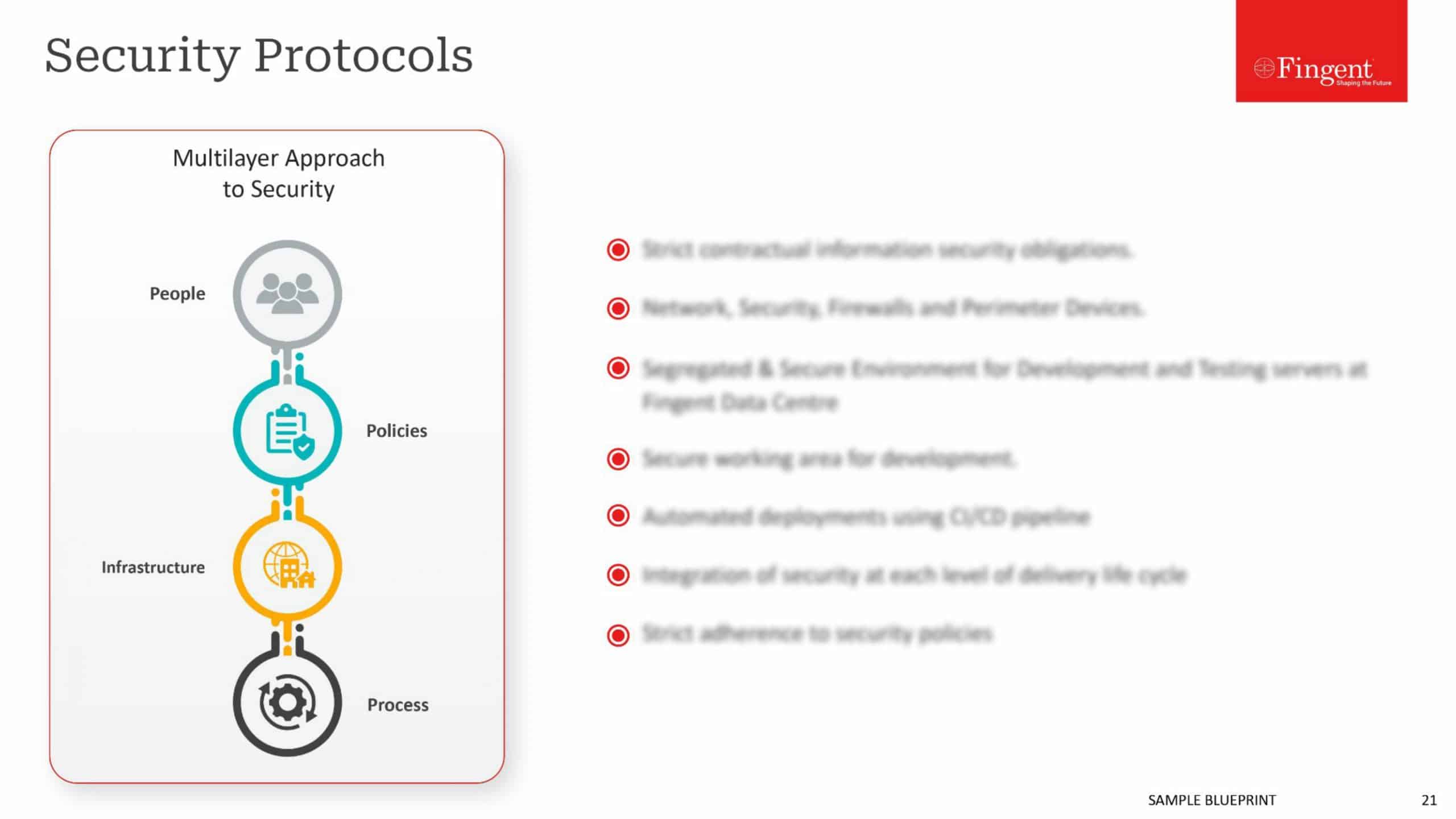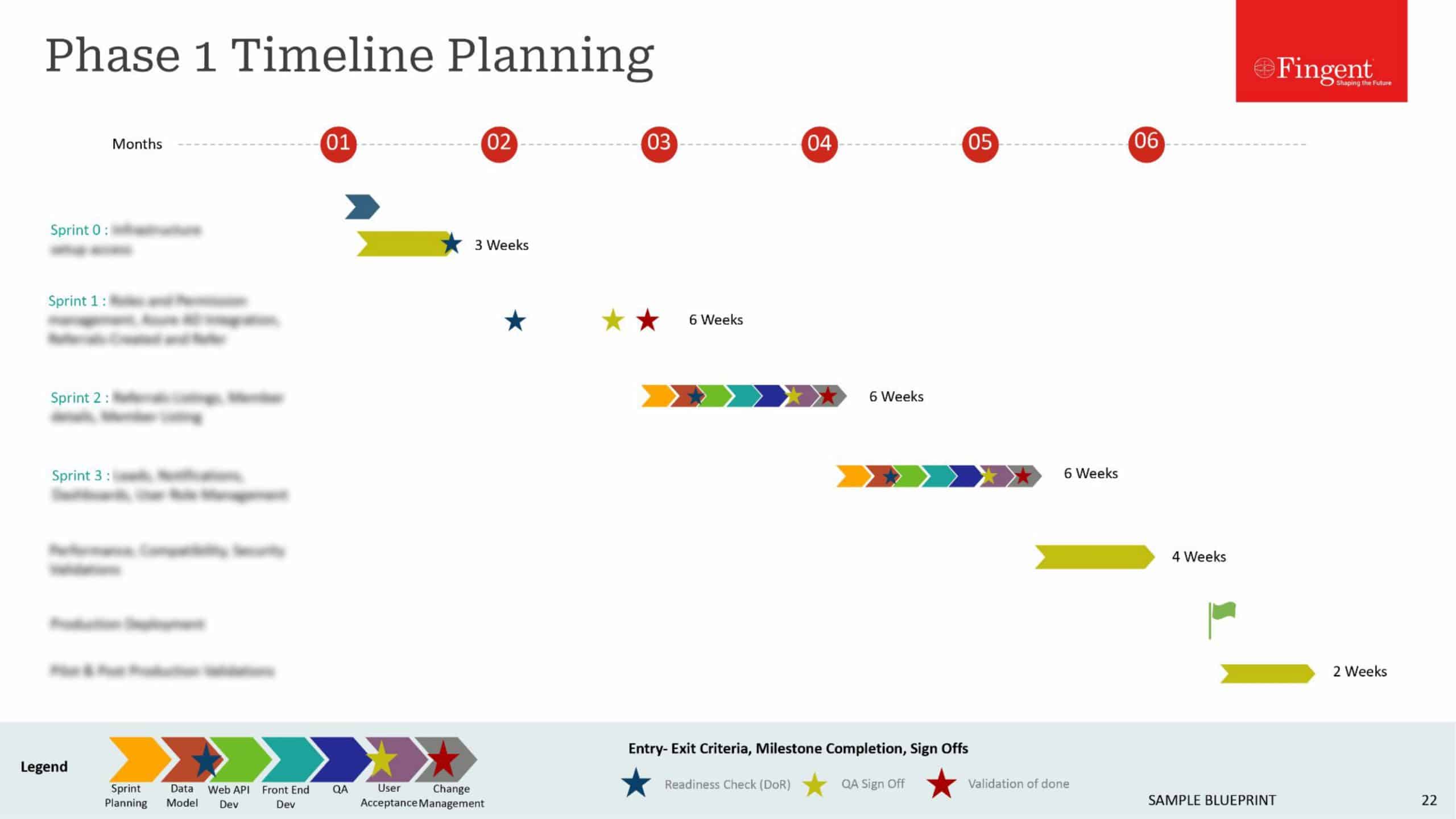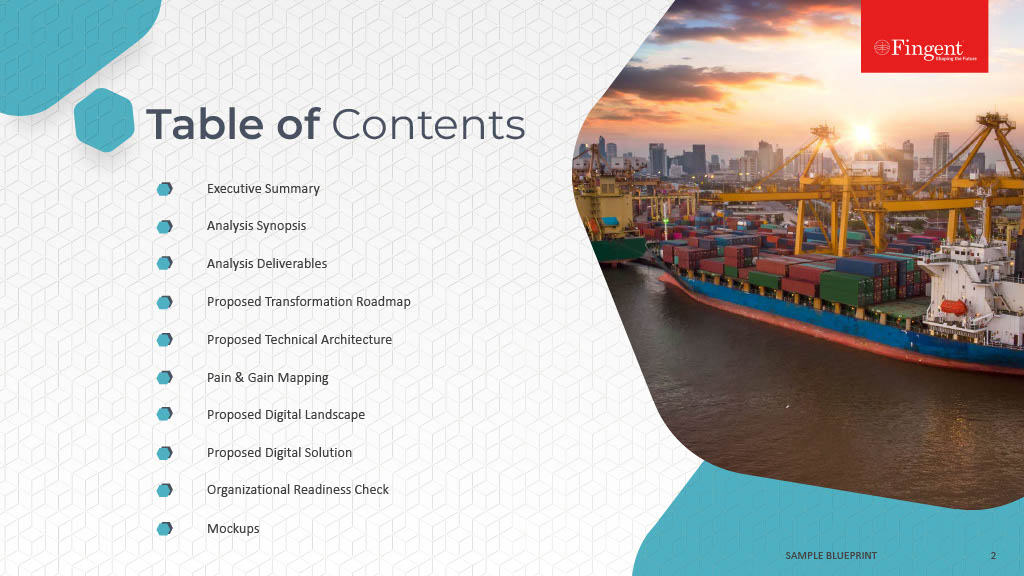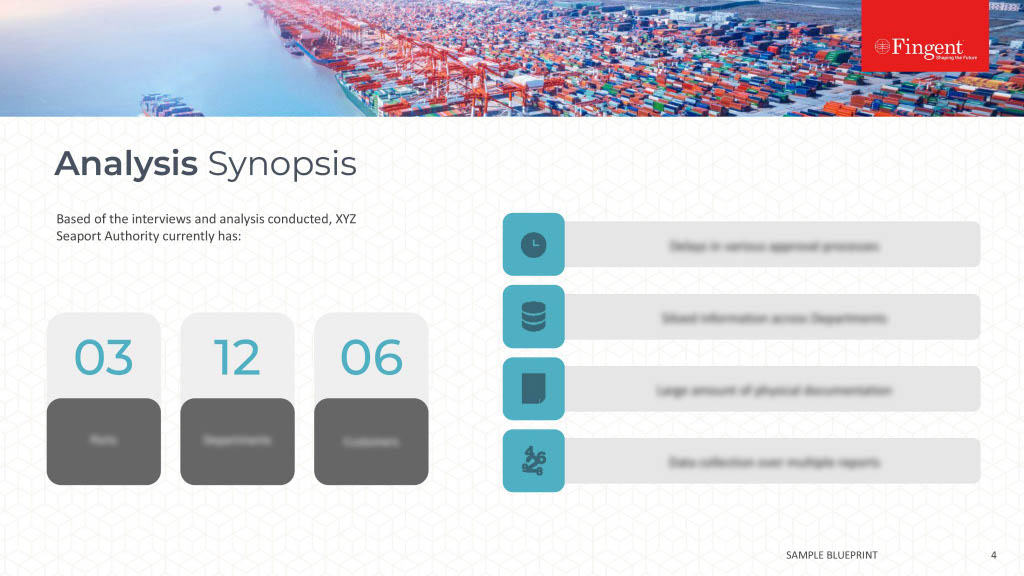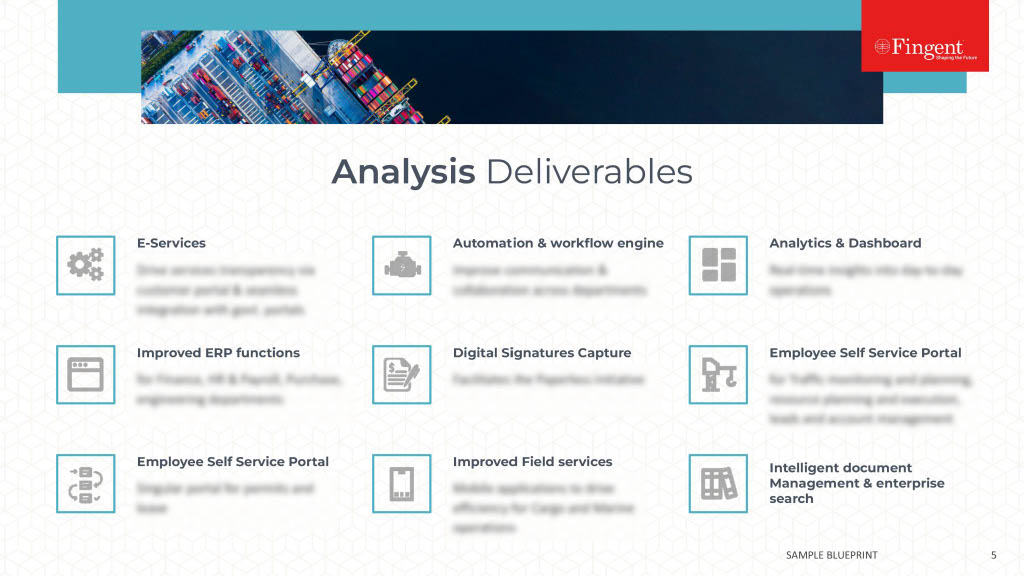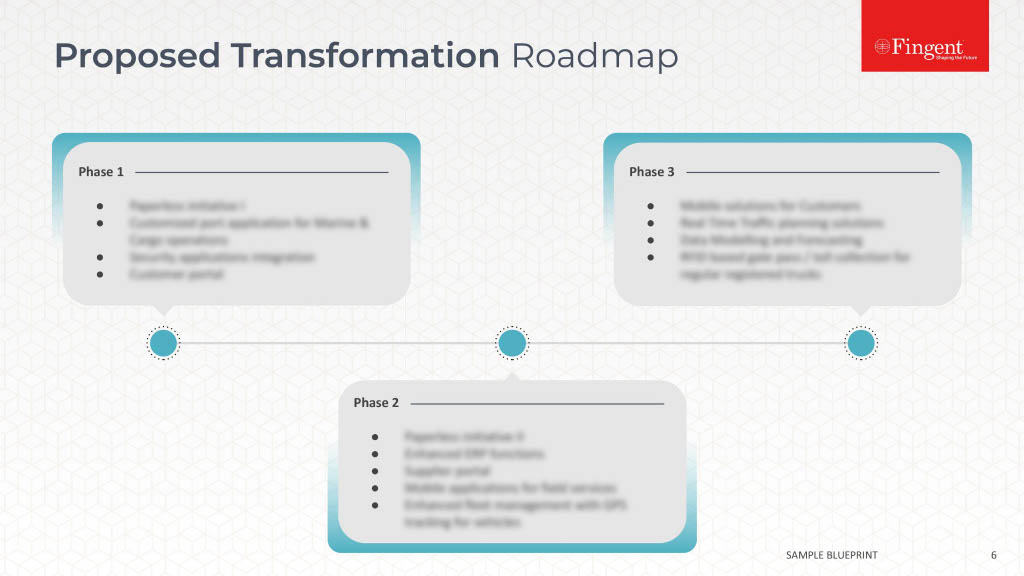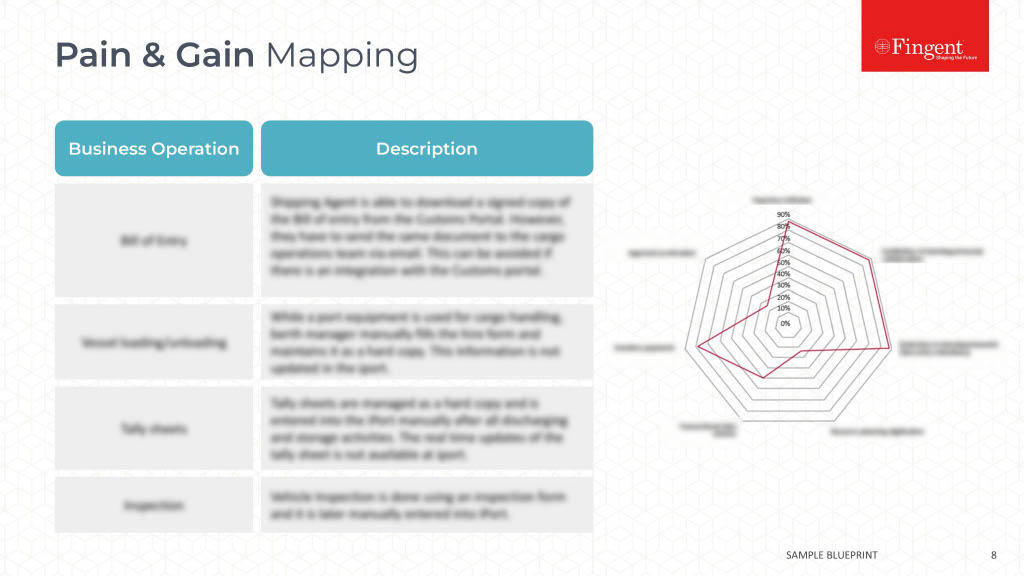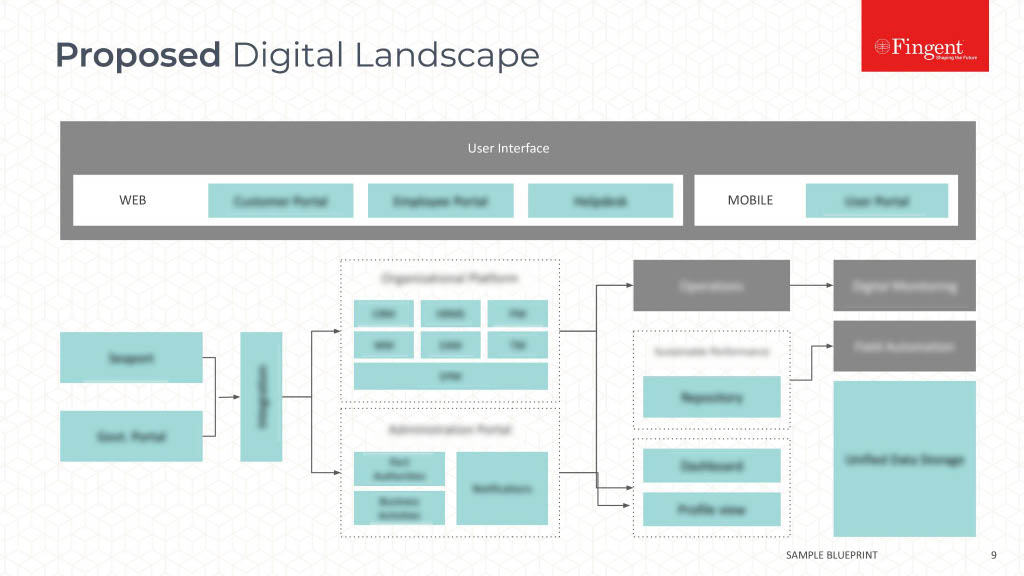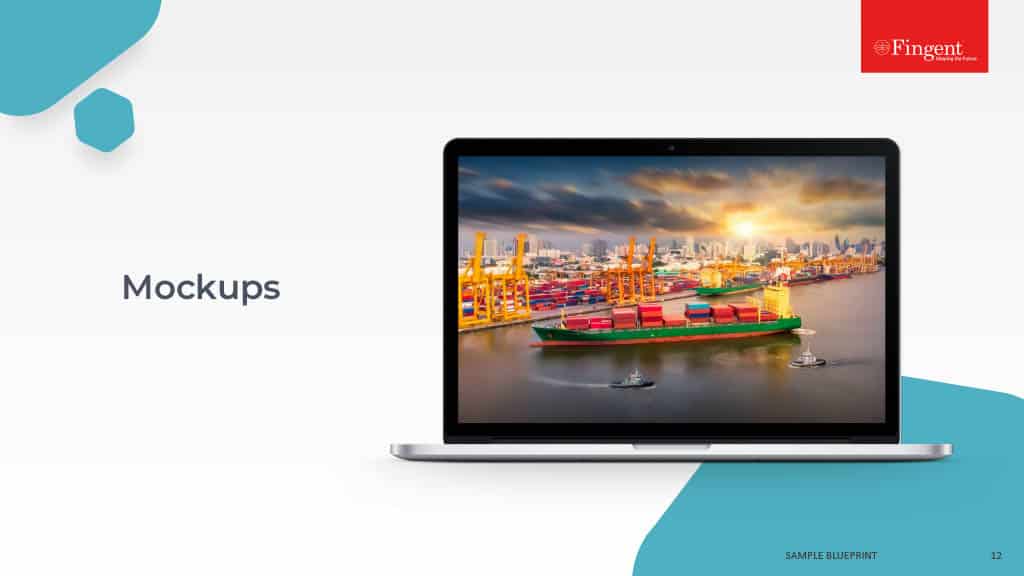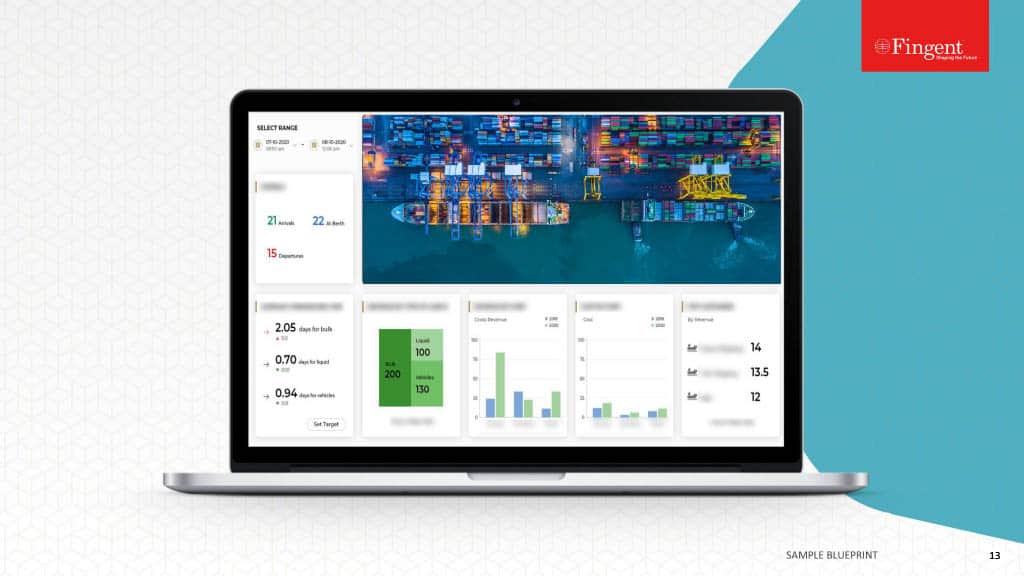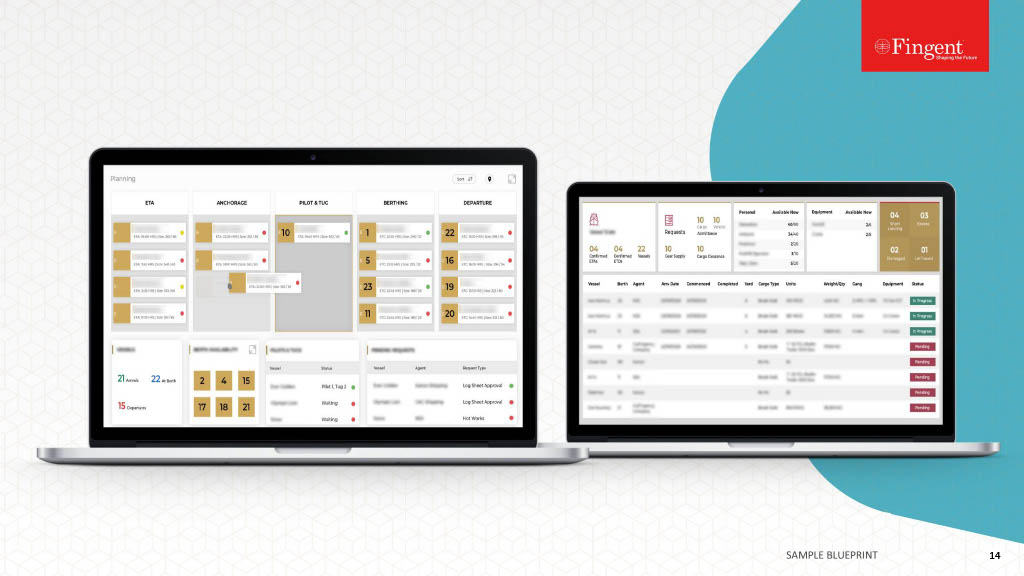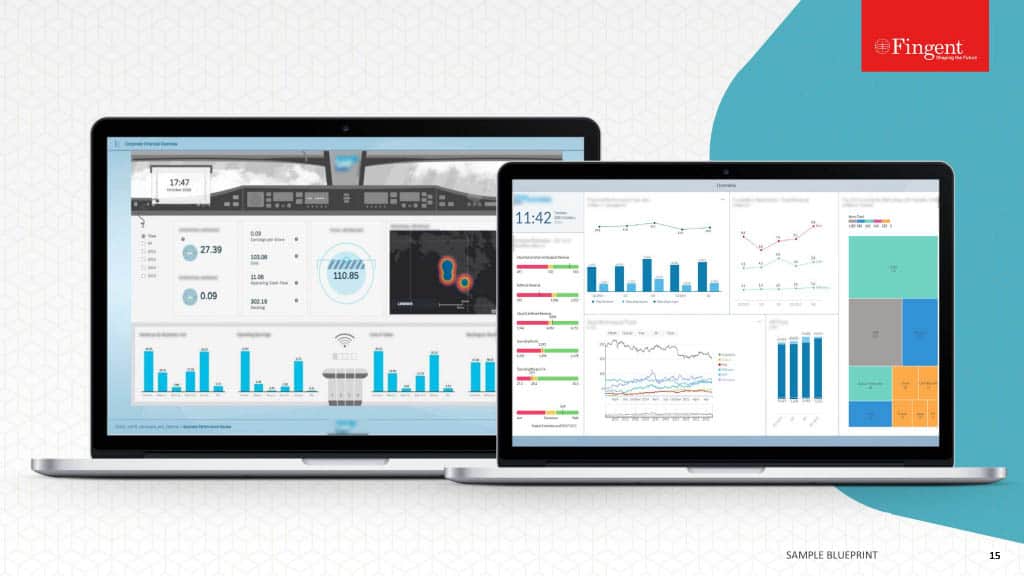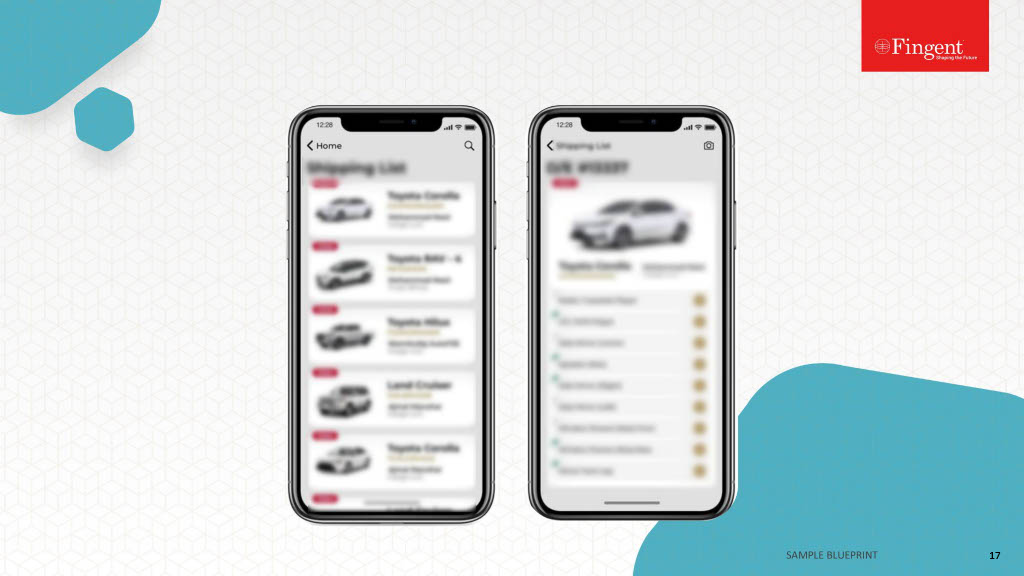Category: Technology
To explain the whole story, from the beginning to the end, in a sentence would be: “Parse was the most popular mobile backend-as-a-service (mBaas) for mobile applications, acquired by Facebook in 2013 and Facebook recently announced that it is completely shutting it down in a year’s time (by Jan 2017)!”
The Parse framework provides a hosted back-end infrastructure with unlimited opportunities for third party developers with its products like, Parse Push, Parse Core, Parse Social, etc., to build their mobile apps (Android, IOS, and Windows) by using a single SDK. Facebook’s announcement on its shutdown, followed by their migration tools and assistance, simply disguise a world of hurt for businesses that based their future on Parse. It’s shutdown has sent panic waves among teams who have their apps on Parse; their main concern being what to do next ? Many are looking for alternatives to develop apps without bothering about the backend, some try to take all the code from Parse to elsewhere and are confused as to which platform to use and trust.
What do you do now?
Relax! Think of it like a simple house-relocation, the whole migration doesn’t come without headaches, but is still in control with some wise moves. Let’s evaluate the actual impact of Parse shutdown in its true sense, and few smart options to overcome the trouble caused.
Who will be affected?
For now, people who have their apps built on Parse. If you have created apps using Parse backend solution, then you surely need a game plan and a skilled technical team to move to an alternate service. However, Facebook has open sourced the Parse’s source code, supplied database migration tools and provided enough time to move to your next option, so this isn’t the worst shutdown announcement ever, So chill. One year is plenty of time for you to move away from Parse or build apps on a trusted place.
And for those others chuckling at the worried Parse users, just be informed that you too are at the risk of such an issue, especially if your app dependents upon third party services. Developers might have ‘exception handling’ for when servicers are temporarily down, but what if the server has vanished forever? A disaster recovery plan will be always handy.
What are your options? (Alternatives to Parse/mBaaS)
The shutdown means you have to:
1. Migrate to another BaaS/ Parse alternatives: Find an alternative BaaS that has all the features similar to your App’s requirements, for Google has many developer APIs and backend services; Microsoft has Azure, or Amazon’s AWS.But of course this requires ample amount of customization to ensure your fit. However, be warned because, “Fool me once, shame on you. Fool me twice, shame on me!”
2. Migrate to a PaaS from one of the major cloud providers: Platform-as-a-Service is more generic and broader than Backend-as-a-Service and the vendors won’t lock you in that much. PaaS services from major players like, Amazon, Google, Microsoft and others are mostly part of their core cloud offerings and therefore is comparatively at lower risk of shut downs. This migration would mean serious efforts from the technical team to develop missing parts, but you can be at greater development flexibility while enjoying all benefits you had with BaaS.
3. Migrate your backend to a self-hosted instance of Parse: Parse Server is basically Parse that can be hosted on your own infrastructure. Your client side will thus remain the same and needn’t refactor the whole app to unplug the Parse SDK. Copy the Cloud Code of your app to the parse-server as described here to migrate your existing Cloud Code to Parse server. There is no Native Cloud code in Parse server and you will need to use replacements like, App Links. Yet, direct replacement is not possible, but you can have a trained developing team to generate these tags and deal with the non-trivial migration process. The issue here is, whether the community will continue developing and fixing Parse in future, since it’s already a zombie. You may also extend your current JavaScript from Parse into full-blown NodeJS application : If there isn’t too much complex scripts on Parse, adding CRUD operations on top of MongoDB database would be much less effort. This shall give you complete control over the backend and data, without having to be locked down into any platform.
4. Look for building your own backend now: Something that you definitely had issue with in order to have gone for Parse in the first place. But since we are more concerned about vanishing services at this point of time, with open source self-hosting, you can at least hope to get the ongoing maintenance from a developer community.
From similar examples of other shutdown notices, the initial chaos it creates and the slow emerging saviors, it’s always wise to wait for a month or two to see how the dust settles, and eventually decide what will work best for you.
Moving to another mBaaS? What should you look for?
The shutdown of Parse, StackMob, Proxomo and MobDB has left developers perplexed about the future of mobile-backend-as-a-service. Unless mBaaS comes up with a credible response to this question of vendor lock-in issue, I doubt any sane developer would touch this now. Hopefully there will be no “fool me three times”.
Developers can avoid reliving such nightmares by ensuring that their vendors don’t lock them in. Under any cases of acquisition or shutting downs, you should be given full control of your applications’ source codes. Be sure to check these with your provider if you consider using BaaS or mBaaS:
Developers can avoid reliving such nightmares by ensuring that their vendors don’t lock them in. Under any cases of acquisition or shutting downs, you should be given full control of your applications’ source codes. Be sure to check these with your provider if you consider using BaaS or mBaaS:
1. Do you get full access to their mBaaS source code (including the backend server and backend server administrative console and not just client side SDKs)
2. Can you continue running your app if they shut down (Ask them whether you can download run time components of your app and deploy it elsewhere without going to their site)
3. Who owns the IP (intellectual property) of your app components? Ask your vendor to demonstrate these to you; if they can’t show how this is done or probably has no reference to provide, like a customer who got this done, you are locked in to them!
Can Developers still trust 3rd party services?
With Parse shutdown people woke up to what “Vendor-lock-in” actually means in practice. Several factors like, the move to serverless computing (e.g. Amazon Lambda), have recently made mBaaS a lot less attractive as a standalone. And with the recent shutdown notice, Backend-as-a-service is presently facing a tough time.
However, It is definitely a tricky balance between choosing an mBaaS platform or building the mobile backend yourself. The favored suggestion is to do more work on Amazon with the option to fall back to Google, than to do less work on Parse but without any plan B.. As Dave Verwer, founder of Curated puts it:
“It’s always a tricky balance between using a BaaS platform like Parse, or building everything yourself. We’re all aware that any service we rely on could potentially go away at any time but there is none more disruptive than your entire back end! On the other side of the argument, you could spend years building everything you need from scratch and completely custom, then have the app not gain any popularity and have it all wasted. It’s a tricky problem and there’s no right answer.”
Yes, Parse shutdown has brought a lot of pain, but it has also drawn light into the hidden risk that developers who depend on 3rd party services are at. It’s terrible when something you count on becomes an ex-service, but as its result you wouldn’t want an “ex-app or business”. If you are affected by Facebook’s move, you have to make a plan change and a new game plan until there’s time. Fingent will be glad to be of service to you for any migration, or app development using your own backend. We can help you decide what will work for your business in the long run.
Still unsure about your options? Let’s discuss!
Stay up to date on what's new

Featured Blogs
Stay up to date on
what's new



Talk To Our Experts
Over the past few years, the one trend that we saw throughout was the rise in the use of mobile devices. The number of smartphone users in the world has now surpassed 2 billion according to E-marketer, which is an increase of about 12.6% over the past years. Now if that doesn’t say we are moving rapidly towards an increasingly mobile future, I don’t know what will.
While on one hand, it makes all our lives a lot easier, on the other hand, it means things are a little more difficult for the developers. Businesses these days demand more mobile based solutions, while at the same time, do not do away with web based applications. As the trend these days is, businesses want web applications that can also work on mobile devices – the best of both worlds.
Hence, developers these days are throwing up their hands in frustration trying to create interactive content through applications that are accessible from both desktop and mobile devices for businesses. A major shift towards HTML5 is now becoming more essential in order to satisfy industry demands. The future may well be in the hands of HTML5, considering the rising need for all pervasive applications.
The mobile world that we live in
As of this year, we have around 4.61 billion mobile users in the world and it is expected to reach almost 5.07 by 2019, considering the pace at which it is increasing every day. And another interesting fact is that since 2013, we have had as many mobile phones in the world as there are users. That means there is likely to be not a single individual now, who doesn’t own a mobile device, thereby increasing the chances of applications being viewed on mobile devices more.
This makes it all the more necessary for developers to create and deliver complex apps that work on all devices faster.
TMCnet contributing writer, Steve Anderson, mentions in an article that, the increasing popularity and use of mobile devices across business enterprises “will leave many developers looking for a way to develop for desktops that also allows for use on mobile devices.”
For all these reasons and also because of it’s rich features, it is no wonder that HTML5 is rising high in popularity.
A large majority of developers are now using HTML5
Almost 153 Fortune 500 companies are using HTML5 now. And a survey of more than 3400 developers conducted across the U.S, Europe, and Asia this year shows that more than 50% of developers are now developing HTML5 web apps for mobile, closely following iOS which are used by 61% of developers.
What’s more, as part of a recent Strategy Analytics survey on mobile application developers’ preferences and attitudes towards application development, researchers have also proved that, out of all the technologies used for building native or web apps, HTML5 showed the strongest predicted growth rate at 20%. They also found out that almost 63% of all business apps are being created in HTML5.
Always the developer’s choice
HTML5 offers a whole new range of possibilities and powerful capabilities to its developers when compared to native apps development. Syntactic features like audio, video and canvas elements, for example, are some of the new and effective features provided by HTML5, all of which make it much easier for developers to integrate multimedia or graphical content on the web app or web, without the need to rely on APIs and plug-ins.
Another key attraction for developers towards HTML5 is its open standards support, which enables them to fulfill application requirements in the face of fragmented mobile devices, form factors, platforms, and operating systems. They can basically use HTML5 to create and deliver rich content without having to rely on the device or its Operating System, which again makes it more preferred than native.
Besides, developers have always preferred coding in a language that can be used across different platforms, so as to ensure good quality user experiences on multiple devices and screen sizes. Also, because it helps them maintain a skillset that can be applied for different kinds of requirements as well as companies or employers. These days even JavaScript programmers are moving to HTML5.
In the future
Looking back, it is indeed surprising to see how much of an impact HTML5 has had on mobile app development. It has literally been a revolutionizing force. Now, it has come to be the perfect blend of developer preference, business requirements, and technological advancement. In the coming years, it is definitely going to be adopted by more number of enterprises, as they are slowly moving from their usual administered use of Internet Explorer, to Chrome or Firefox browsers at work, both of which have high-level HTML5 support. Further in future, with the growth of Windows 10 adoption and use, the use of the new Microsoft Edge browser will also increase, which will enable business enterprises to make full use of the power of HTML5.
Want to develop a smart Mobile Application for your Business?Contact us.
Stay up to date on what's new

Featured Blogs
Stay up to date on
what's new



Talk To Our Experts
The holidays are over, most of the Christmas décor have been packed up or are still waiting at the sideways for the garbage pickup. And it’s that time of the year again, when we start with new hopes, resolutions, plans and budgets for the New Year head. Last year, we saw massive technology breakthroughs, some gaining immediate success and application, and certain others setting the stage for future innovations. To name a few, the Internet of Things, the Magic Leap, 3D Printing, Car-to-car communication, Project loon, Smart Machines and Apple pay were top technologies of 2015, that pretty much left us awestruck by its pace. If that has been in the past year, imagine what technology will have in store for the year 2016!
Pop!!! I just popped your imagination balloon to bring light to the international Consumer Electronics Show (CES), happening at Las Vegas from 6th to 9th January 2016. The event brings together all the stunning technologies that will probably set 2016 on fire- the tech fire, leaving all of us super thrilled and anxious about the ‘coming soon’ technologies. The marketplaces/TechZones at the giant exhibition floor will showcase terrific technologies, ranging from wearable to unmanned systems, which will make our lives like one in the fantasy world, very soon. For CXOs, managers and other key decision-makers of startups and SMBs, this means a critical opportunity to bring their cool products on limelight. The startups exhibiting in Eureka Park Marketplace at CES have been getting over $1bn collective investment since 2012.
The members have been preparing for the event for weeks and there are a lot of speculations from the usual CES suspects about what we will see at the annual conference. The following technologies will have a major role this year:
Personalized wearable
The Google Glass, Apple watch, Skully motorcycle helmet, Tag Heuer and Oculus rift have been a heck of wearable last year. This year the market is even riper and is going to be attractive with more personalized offers. No surprise because, the wearable sales are predicted to cross the 29 million units mark in 2014, to a whopping 172 million by 2018 and its global revenue will see a 12-fold increase from that of 2014. There will be a lot more smart watches from legacy brands, life-saving wearables, women’s wearables, commodity wristbands, mind reading tech, wearable toys, smart clothes, Invisibles, low-cost wearables and next-gen fitness trackers; however, the big players like Apple, Google or Pebble might not reveal their surprises so soon. Sensors will pop up in everything, from sneakers to dresses. Hearables (smart headphones) – adding sensors to earphones for wireless transmission, communication, medical monitoring and fitness tracking purposes, will be a thing this year. However, we might want to wait until spring to know where the wearable trend is actually heading.
More Rideables
Anything with wheels will also have sensors and electric motors attached to it. Electrification will become eminent and there will be many small electric scooters, skateboard, and bikes with advanced battery life and bearable budgets. Luckily, the use of hover boards is banned at the convention center. We are yet to see how different will they be from last year’s participants.
The ‘All-Connected’ dream Homes
Your dream home will seem even more fantasized, with everything in it connecting and talking to each other to make the everyday tasks automated, quick and easy. Apple HomeKit, Google Brillo and Samsung SmartThings are clearing out the mess to make connectivity creep through all areas of your home and make all equipment more integrated. We’ll see the beginner tangible pieces of the Internet of Things, helping the things get connected and speak the same language in few years from now.
AR and VR are like the hosts
Augmented reality and Virtual reality are always present in their different manifestations at the CES ground. HoloLens and Magic Leap are down the lane, Oculus has yet to reveal the first look of Rift headset or its touch controllers, either of which can occur at CES 2016. Stepping up the gaming zone, VR is expected to become mainstream this year and companies will have the technology used for real day applications. Considering the momentum it has gained now, it is fair to expect many other companies, like PC hardware and accessory manufacturers to reveal their VR surprises at the show.
Drones everywhere
A major part of the CES floor will be reserved for the ‘unmanned systems’ which will include drones that can be used for anything from travel, sports, photography, construction, search and more. Drones will come with creative upgrades, with better sensor integration and intelligence to carry out your specific needs smartly. The event will also include security, risks and safety discussions and future implications of such gadgets.
Cars become a must-have gizmo
CES showcases high technology cars over the years, that it more or less resembles the Detroit Auto show. This year, cars will be even smarter at the show with technologies like, smartphone connectivity, electric vehicles, in-car infotainment centers, and self-driving technology acting together. Moreover, Faraday Future, a secretive automaker in California has revealed its first all-electric, non-polluting sports car concept. Several other manufacturers like, General Motors will reveal the production versions of their next electric car. All major players in the industry, from Tesla to Toyota will be there unfolding their surprises at the event.
Apart from these, security is going to be a major subject of discussion at the CES 2016. With the Internet of Things being a source of numerous security concerns, as different companies collect more and more personal and confidential data of consumers, security is the biggest focus at the event this year.
So, let’s look forward to the event kicking off tonight, to bring us some amazing technology tricks.
Image courtesy: The Verge
Stay up to date on what's new

Featured Blogs
Stay up to date on
what's new



Talk To Our Experts
2016 will be the year when technology will bridge the gap between the physical and digital world. The Internet of Things and the rise of connected data will bring even more opportunities and also many new challenges. Keeping pace with the latest business technologies is crucial to stay ahead of this game. Listen how companies can lay strong foundations for incredible changes that are about to happen. In this videocast, we request our CEO Sam to take a stab at predicting technology trends that may materialize in 2016
Stay up to date on what's new

Featured Blogs
Stay up to date on
what's new



Talk To Our Experts
Let’s think for a moment, of the technology driven world that we live in now and how much the all pervasive technology has changed the way that we all live our daily lives. From our personal spaces to the biggest businesses and industries, we have come a long way from brick sized cell phones and DVDs to sleek touchscreens and microchips to name a few of the smallest changes. With the advent of the “Internet of Things” and “Industry 4.0” or the Fourth Industrial Revolution, we have been introduced to and have infact been living with a concept called Ubiquitous computing or pervasive computing.
According to Wikipedia, ubiquitous computing in contrast to desktop computing, involves the usage of any device in any location and in any format. It basically enables a user to interact with a computer which may exist in a number of different forms such as the regular laptops, desktop computers and notebooks to sensors and terminals in our everyday objects like the refrigerator, a pair of glasses, the TV and the like. We have all come to embrace these concepts, getting used to the “things that think” around us, and having the ability to get things at our fingertips.
Such ubiquity of software has touched almost all aspects of our lives and all industries in the business landscape as well, including the manufacturing sector and the audit and compliance sector, leaving no stones untouched.
Software in manufacturing and audits
The first ever industrial robot was used in the production line in 1954, and since then, software has always played a huge role in manufacturing and production, not as a core function though, but as a supporting function. But with increasing moves towards digitization and automation of processes and procedures, especially under the Industry 4.0 umbrella, software started to assume bigger, more comprehensive roles and now we find software everywhere, from production lines to control systems. Literally every device or equipment involved in the processes are connected among each other as well as to a central unit, and are also programmable, thus making the already thin line between physical and digital even more blurred.
Considering the industry’s general shift towards a more consumer-driven approach, it is indeed necessary to incorporate more flexibility, agility and control across all processes, as the pressure to deliver high quality, configurable products and services is only going to increase down the lane. All this increases the need for manufacturing companies to invest in technology, especially software based technology, so as to generate more speed and flexibility, both of which are critical to be profitable in this environment.
Business Intelligence and Performance management are two other areas in manufacturing which make use of software and data gathering on a large scale according to Gartner. Hence, the manufacturing industry assumes one of the top three positions in the list of industries looking to hire technology and software experts.
Just like manufacturing, the concept of software everywhere also redefines the scope for audits, inspections and compliance, and there are many newer challenges to face. One point of concern though, is that there may be a thousand risks and consequences associated with certain kinds of technologies and their deployments, but only little thought is put into understanding them, and even the manufacturers, lawmakers and compliance bodies know very little about many of these risks. For example, the risk of manipulation is something that most people have often overlooked and the recent scandal of the German automobile giant, Volkswagen proves this point.
The Volkswagen scandal
In September 2015, Volkswagen was issued an EPA notice after it was found by independent NGOs that they had been cheating in emission tests. It was discovered that Volkswagen cars were emitting up to 40 times more toxic fumes than permitted, which included particulates that are really harmful to the lungs especially for those with breathing related issues. They had since then admitted that they sold about 11 million cars over the last 4 years, which implies that this practice or this cheat has been going on for a quite a while.
The British newspaper “The Guardian” estimates an average of 1 million tonnes of air pollution from the Volkswagen cars every year, which is roughly the same as the emissions from all of United Kingdom, from power stations, vehicles and the like. It only means that the pollution caused by this cheat is as bad as the pollution from an entire country.
Now how did Volkswagen manage to get past all the rigorous, stringent and detailed tests conducted by the EPA, that too for a long time?
It was in the tests
All the tests of the EPA, like a cold start test, a hot start test and many others along with a 30 minute rigorous test by the Federal procedure as well, are usually specified in great detail, as are the steps in order to prep the cars for them. And unlike any other compliance tests which may have many grey areas, these tests of the EPA contain specifications, which are very thorough, detailed and extremely clear – everything that you can expect from a good quality specification.
It was this very attention to detail that enabled Volkswagen to cheat. Most mechanical parts of a car these days are managed and controlled by computers and electronic control units. These units have information about almost every single part of the car such as the speed, the angle of steering, the fuel intake etc. and such information is generated almost every instant that the car is switched on. The extremely detailed test specification and the availability of such specific information about the car enabled Volkswagen engineers to program the computers to use this information to recognize when the car was being tested. They were able to program the software to switch the car from a road mode to a calibration mode, when it recognized that the car was being prepared for a test.
Now the one thing that is crystal clear from this whole issue is the fact that it impacts all of us in the business of quality assurance and inspections. Just like cars, almost all equipment used in manufacturing and production rely on some kind of software, and software, as we know it, is a very different beast, considering the traditional equipment that we are used to, when it comes to production, manufacturing, control systems and the like.
This shows that advancements in technology only mean more vulnerabilities and challenges for compliance auditors and inspectors and more alertness from their end. So what exactly are the points that we, as auditors need to keep in mind when it comes to compliance inspections and what are the challenges that we face? Read more on our blog, Challenges For Auditors And Inspectors In The World Of Connected Devices.
Here’s a webinar on the ubiquity of software in the compliance industry, by Deepu Prakash, Head of Process and Technology Innovation at Fingent Corp:
Stay up to date on what's new

Featured Blogs
Stay up to date on
what's new



Talk To Our Experts
Fast technology pace, sudden paradigm shifts, changing business models and the fall or rise of the year- predicting technology trends can often be like reading tea leaves. Who would have predicted Google being the star of the internet? Or the extraordinary popularity of Uber as an unrivaled app-based cab service, the rise of Tesla or Amazon, the resurrection of Apple.
What has 2016 in store for businesses and enterprises? Know more in this short video cast as we request Deepu Prakash, Head of Process and Technology Innovation at Fingent, to take a stab at Technology predictions for 2016
Stay up to date on what's new

Featured Blogs
Stay up to date on
what's new



Talk To Our Experts
The day when you’ll see the everyday things- from phones, cars and doors, to lights, refrigerators and washing machines, connected to the internet is not very far. In fact there are over 13.4 billion connected devices already and it is expected that the number of internet-connected devices will reach 50 billion by 2020.
In spite of becoming an integral part of personal lives, the IoT will also bring major paradigm shifts at every phase of businesses. Many companies have already started adopting IoT and to plan their business around it. There are only two options- either get ready to embrace this revolution and stay on top, or face the consequences.
The manufacturing business will have to bring major changes to be in the game, around software, data and connectivity mainly. According to Gartner’s 2015 overview of manufacturing industries, business intelligence and performance management are the top priorities of manufacturing sector and both these areas are heavily dependent on software and data gathering. Hence, Manufacturing is in the top list of industries looking to hire data and software experts.
The software everywhere helps make all devices programmable and narrows the gap between digital and physical. While software everywhere redefines the manufacturing industry, it also redefines the scope for audits, inspections and compliance because it brings with it new challenges. Let us see some of the challenges the Internet of Things will pose to audit, inspection or compliance sector in detail.
Challenges for auditors dealing with software everywhere
Auditing is not a walk in the park when it comes to organizations adopting new technologies and automating tasks with software everywhere. While the Internet of Things brings many rewards, it also poses serious risks, which if not carefully dealt with, can lead to organizational disasters.
Technologies move very fast and manufacturers are under pressure to keep pace. Each passing day there arise new laws to which the businesses, organizations, industries and agencies should conform. Most often, there might be less thought devoted to the risks associated with certain deployments of technologies in businesses, and the manufacturer, law bodies and compliance bodies may not be aware of all the risks. The IT departments are generally the ones bearing the brunt of the storm, with a variety of auditing issues, which if not managed properly can spoil the compliance and security of even the most ambitious organizations. One of the biggest challenges for them is to make sure that all the technology and software deployed adhere to multiple compliance standards. The internal auditors should stay abreast of the new IoT developments to foresee these risks and controls in their business.
While software everywhere will ensure quick, flexible, easy and smart business processes, such flexibility can also be a loophole to circumvent compliance requirements. For instance, a machine or a device can be programmed to identify that it is being inspected or audited, the software can recognize the test pattern and it can then generate results, which appear to be compliant to the audit. One way to overcome this problem is to adapt smart auditing strategies like those used by quality assurance professionals, who constantly deal with such issues. For instance, auditors could use heuristic based techniques, where audit design and execution are combined and the auditor explores the system to identify non-conformance to high-level heuristics.
Another key aspect to consider in the area of software, is regarding ownership. The Digital Millennium Copyright Act (DMCA) makes it unlawful for independent auditors to look at the code that runs on a machine, thus making it easier to conceal intentional wrongdoings. Unfortunately, this law can punish users and auditors who try to understand whether their software or system are compliant, or can be manipulated in a manner that it will endanger the consumers of the product manufactured by these systems. Another important challenge for audit regulators is the need for effective reporting to their stakeholders regarding audit performance, and the efficient conduct of audit inspections, which requires coordination among varied regulators and compliance with differing laws and regulations.
However, the good news is that, changes shall happen over the year 2016 that will make it possible for such business to conduct audits much efficiently, to check if they are compliant to legal norms like FDA or EPA norms and other good manufacturing practices.
Challenges for auditors dealing with large amounts of data
Increased use of computerized systems, smart manufacturing and decreased storage costs have led to generation of large amounts of data that are aggregated, coded and classified to enable good decision making. Auditors can derive value from this data and ensure that decisions made are based on solid, quality information that is trustworthy and relevant. This big data enables root cause analysis in cases where noncompliance or failure is detected, and can be used to provide a near complete picture of the system state at the point of failure. The availability of such valuable data can enable quicker corrective actions. Non-compliance issues detected years after the production can be safely traced back with retrospective auditions.
However, the unstructured nature of big data poses big challenge for the auditors. There need to be a good standard of managing the generation, classification and storage of data, for it to prove useful in auditing or inspecting activities. Data processing standards today do not cover the governance processes for management, storage and expiration of data. However, changes are expected in 2016 that will address the present state of big data with respect to the audit environments.
Challenges for auditors dealing with storage and ownership of data
Image courtesy: Cloud Lounge
In production environments, the data produced by the equipment and system used in production line are mostly stored in clouds. In the cloud, these data may be stored on storage devices that may not even be owned by the manufacturers who generate data, but will be owned by third party service providers, like analytic provider or storage service provider (like amazon). In such cases, it is not the manufacturer but the third party, who gets the ownership of these data. In fact, data may not be even stored in the same country. Such a 3rd party doctrine complicates the issue when confidential transitional data is stored by cloud server providers and this raises more issues like confidentiality and contract, availability of data for audits, and liability issues.
Challenges for auditors dealing with Connectivity
The Internet of Things (IoT) as we have all heard of has been around for quite a while and this year we saw a large number of connected devices flood the market. This is only going to increase and by 2020, we are expected to have over 50 billion connected devices. The Internet of Things is not just connected cars, cameras, and doors. IoT also extends to heavy machinery, to jet engines, oil drills and to connected devices and equipment in manufacturing and production, as well. As smart manufacturing gains momentum, more and more machines on the production lines are connected and online. Machines are connected to each other to exchange data, and to servers in the cloud to enable machine learning, monitoring, forecasting preventive maintenance, etc. This ensures cycle time reductions for corrective and preventive actions post audits. Remote monitoring and diagnostics can ensure that the product complies with the legal requirements. Connectivity can help conduct remote inspections eliminating the need for people to travel to the locations to get the audits done.
While connectivity brings the above advantages, it brings with it, its share of challenges as well. Poor security, for example on connected equipments can make systems vulnerable to hacking and systems can be compromised without the hackers having direct access to the systems. As a matter of fact, vulnerabilities in any connected device can compromise an entire system. The security of connected equipment will soon be an area of compliance for audits and inspections across industry segments. With time, it can even enable production to happen at the supplier’s end or the consumer’s end, rather than at the factory, which can further increase the risks for auditors and inspectors. They will have to take into consideration the entire chain of equipment that communicate with each other, and modify their audit strategies accordingly.
Everyone, who are in the business of audit and compliance are impacted by the IoT and by the fact that all the equipment we use are connected online, is programmable and is generating enormous amount of data. The auditors, inspectors and all of us in the audit and compliance field need to learn about the new skills and competencies pertaining to the software deployment, vulnerability detection and software compliance. The good news is that there are established practices in the software QA (quality assurance) industry, which can provide good reference points for those who wants to upgrade their skills. However, the hardest part is to change the mindset and culture among auditors and inspectors to adapt to this new paradigm of Software Everywhere. We need to move faster to adopt practices, processes, and new mindset and to learn new skills that will enable us to do a better job in auditing, compliance and inspections for devices that are connected, generate lots of data and are managed by software!
View this webinar on the ubiquity of software in the compliance industry, by Deepu Prakash, Head of Process and Technology Innovation at Fingent Corp:
Stay up to date on what's new

Featured Blogs
Stay up to date on
what's new



Talk To Our Experts
Enterprises these days, are always looking to adopt the best technologies and applications for their various business requirements. In fact, it is almost inevitable for organizations to use software to automate their processes and improve efficiency so as to gain competitive advantage. Along with it, organizations also need ways to have more sustainable development processes, and the good news is that they have already started to realize it with DevOps. According to a recent research by International Data Group (IDG), there are only 10% of organizations that do not have any DevOps plans in the near future.
Do you think DevOps is that necessary for your business?
To answer that question, it would be worthwhile to discuss a little history of DevOps, how it came into being, and how it is used by businesses these days.
What is DevOps
According to Wikipedia, DevOps is a culture in business enterprises that emphasizes the need for collaboration, communication and coordination between the software developers and other information technology professionals in the organization, while automating the various processes of software delivery and infrastructure changes. It basically aims at promoting an environment, where application development, testing, as well as release, can be more frequent, fast and reliable. In the traditional setup of organizations, there was a lack of integration of these functions with the IT department, which often led to unsatisfactory results. DevOps seeks to bring about a culture, where the processes and procedures in an organization promote communication and collaboration among the development team, the Quality Assurance (QA) team and the IT operations team.
Nowadays, as more and more applications are being built to meet different business requirements, and they are constantly updated to adapt to the changing needs, the processes become seemingly never ending. This is where DevOps would particularly be useful. It accelerates development, testing as well as deployment of applications with the help of tools and techniques that automate tasks for operations, while at the same time give the developers more control and command over the entire application life.
A brief history
It was in 2009 that the term DevOps became popularized through a series of devopsdays in Belgium. Since then, it has been widely used among web-based businesses, like Netflix and Etsy.7 Although, that is not the case now, when enterprises know and have seen the benefits of DevOps and are capitalizing on adoption.
How enterprises are utilizing DevOps now
According to the IDG research, almost 61% of organizations are embracing new strategies and techniques, like the agile development methodology and DevOps in the upcoming year, which is an increase from 48% this year. This only proves the level at which DevOps has grown in adoption and how much popular it is in increasing efficiency. Up to 77% of organizations say that their software development team and IT operations team collaborate frequently, and 56% of them also say that their IT operations team plays an increasing role in the management of outsourced development activities. This again goes on to prove that DevOps is definitely the way to go. With the increased role of the IT team and considering how important their association is with the development team, a combined culture will go a long way.
Considering that DevOps is a whole culture change and not just a kind of technology that can be adopted and used easily, enterprises do need their time to adapt themselves and get used to the new ways of interaction and working.
Michael Rembetsy, VP of Technical operations, Etsy says, “It takes a lot of time. It takes a lot of effort from people at the top and it takes effort from people at the bottom as well. It’s not just the CEO saying, ‘Next year we’re going to be DevOps’. That doesn’t work. It has to be a cultural change in the way people are interacting.”
Why DevOps?
According to the research, almost 60% of organizations still use a waterfall development approach, which is a linear progression through the development stages of a project. It often leads to misinterpretations and failures, as there may be change requests by the client after the entire process is complete.
41% of organizations use an agile development process, which involves smaller and more frequent builds, regular and continuous planning, testing and integration and a more welcoming attitude towards new requirements. It leads to a faster time to market as well. DevOps clearly serves the needs of this approach, as it involves frequent interactions as well. Simply put, it leads to more sustainable processes.
Another reason why DevOps is necessary is because of the rise in demand for innovative web and mobile applications. Since such applications are required to connect and interact with customers and partners regularly, and capture their preferences and needs at all times, there is no such thing as “one-and-done” with them. They are always changing to adapt to the different needs of customers. DevOps helps to shorten the time of productions of these apps. It adds automation and streamlines workflows so that the developers can build, test and deploy applications smoothly. The research report says that 49% of organizations are planning to increase their investment in custom mobile app development, out of which 57% of organizations are planning to mobilize customer relationship management apps, 51% are planning to go for enterprise relationship management apps and 50% of them for field force automation apps. This only means that DevOps is all the more necessary to keep up with the changing environment.
Benefits of DevOps methodology
According to the report, using DevOps can lead to:
- 41% more automated development processes, which can free up a lot of time for other important activities.
- 38% more positive interactions with the operations team
- 38% accelerated time to production
- 38% ability to improve the product for which a developer is responsible
Not using a DevOps approach can lead to problems like, lack of proper visibility into IT operations requirements in the development processes, increased development costs because of redundant jobs resulting from lack of timely communication and the like. Apart from all these, there will be much less collaboration between the development team, the operations team and the business.
DevOps is definitely becoming increasingly prevalent for all the above mentioned reasons. It is indeed better to shift to a more dynamic and interactive culture today, as the already fast paced business environment is rapidly changing to become even more so in future.
Stay up to date on what's new

Featured Blogs
Stay up to date on
what's new



Talk To Our Experts
The Internet of Things has been of huge buzz lately among every field of business and life, but how well have you adopted it or been a part of it?
If you are able to remotely manage your office/home electronics through your laptop/mobile, then you are a part of IoT. If you can generate an access code on a mobile to enter into a locked property without key, you are using IoT. Most of us are already a part of the IoT, knowingly or unknowingly. But in the coming three to four years, every one of us will visibly and consciously become a part of it. It’s no more a probability, hype or a pipe dream, it’s been happening and is poised to connect over 75 billion devices in the next five years.
Though we are in the initial phase of discovering what is possible when combining sensors, actuators, and networked intelligence, years ahead will open doors to a world, where information is pulled up from living/ non-living things, and is used, shared and identified between the products and services, in the all-embracing network of IoT.
IoT will make over $11trillion impact by 2025
According to a report on industrial application for intelligent machines used in IoT, by General Electric, a simple 1% efficiency gains for systems could result in 15 years of saving:
- $30 billion worth of jet fuel for the airline industry
- $63 billion in global health care savings with more optimized treatments, patient flows, and equipment use in hospitals.
- $66 billion savings in fuel consumption for the global gas-fired power plant fleet.
The impact of IoT applications is going to be massive, about $11trillion by 2025, according to a research by McKinsey Global Institute. More than two-thirds of this value will be for business to business sector, and the consumers of these businesses will enjoy over 90% of the value thus created. However, in order to enjoy these high profits, businesses need to start adopting connected, interoperable systems, devices and components, address security/privacy issues and make crucial organizational changes to reap IoT’s maximum benefits.
Let’s see how businesses should set themselves ready to receive this impact;
Connected and interoperable components and systems in business
Companies should start demanding their vendors and suppliers for systems and components that are mutually connectable and interoperable with each other and with other systems. 40% of the value IoT can provide will depend on the components’ interoperability. Now, connecting the equipment or deploying sensors at multiple locations will not make your business ready for IoT. Companies must also integrate, deploy and customize the analytical software that can collect and combine the data generated by all these sensors, to make efficient decisions, in order to derive better business insights. For instance, there are over 30,000 sensors and connected/interoperable devices in modern oil platform. But less than 1% of data collected from these sensors are actually used for efficient decision making processes in the industry. Also, data needs to be collected, combined and analyzed from multiple components to make an effective predictive maintenance condition. All these render the whole system simply inefficient.
Every device in your business should have an On/Off switch to the Internet
Every device, from phones, doors, electronics, manufacturing machines, printers, to security systems, should be able to connect to the internet. This will make the tasks of these devices up-to-date, just like a PC connected to the internet receives latest software updates on it. Network connectivity will ensure real time checking of component status, features or updates, helping the businesses to stay informed and fresh, always.
Moving to Cloud
Companies should move their data and services entirely to cloud, providing a flexible, expandable, robust way of service to its increasing customer base. The large players in the industry already have their solutions in clouds, to provide scalability and better customer experience.
Security and Privacy concerns of businesses in IoT
Almost all IoT-based applications rely on data from sensors, or consumer data, even collected passively from them, by tracking their behaviors. For instance, in an IoT-enabled futuristic mall, customers will no longer have to wait in long queues to bill their items, rather they could just pick the items and walk out of the exit. This is possible with the bills being totaled by ‘beacons’ that scan the price tags of the items in the customer’s cart, and debit the equivalent amount from the mobile money in his smartphone. McKinsey estimates that there could be around $380 billion reduced costs for retailers per year from this kind of automated checkouts.
The flip side of the whole thing will be the security and privacy issues. Every sensor is a potential loophole for hackers. Implementing such process will need businesses to build trust with the customers, by convincing them that their private data cannot be breached and will only be used securely. A lot of work needs to be done here. Companies, while implementing IoT, should make sure to invest only in high-quality data securing systems/solutions that are super safe for your business and customers. Businesses need to protect their own data, the customer data and the intellectual property. Partner with only those trusted technology vendors providing high-security solutions.
Remote Mobile Device Management (MDM)
Remote mobile device management technologies will play a key role in IoT, controlling and monitoring the equipment in the network of things remotely. This will help business to reduce equipment costs, cut down on resource usage, avoid disasters remotely. Optimize operations, and boost productivity.
Building the right organizational environment
Collecting or gathering data from everywhere is not the key thing, the actual point lies in combining the different information, analyzing it, and acting on it. Even the biggest of the organizations struggle to make the optimum use of the information technologies available to them. So it’s not just about having the most sophisticated technologies, it’s about using and sharing it within the organization and making crucial data-driven decisions from it. Operations need to be continuously monitored by IT experts, as processes are getting redesigned around IoT and the managers should plan how to interpret real-time data (i.e, to integrate information technology and operations technology). Marketing, financing and information officers will be required to share their data. And teams should learn to make decisions relying on machines and data.
Sooner or later IoT will mean a tweak in the lens through which we all will see the world. It will change everything and every business should consider its implications. Over the next few years, you will see the Internet of Things hitting a tipping point very fast. How can your business get on top of it, understand and implement it? Learn from our tech experts
Stay up to date on what's new

Featured Blogs
Stay up to date on
what's new



Talk To Our Experts
According to Gartner, a strategic technology trend is one that is likely to or has the potential to have a significant impact on the organization, like the chance for a disruption to business or Information Technology users or the need to make a huge investment etc. These are all business decisions that are likely to affect the organization in a huge way in terms of its long-term goals or initiatives.
It’s that time of the year again when organizations start charting out their strategic technology plans for the coming year and prepare themselves to meet the resources and expenses for the same. What are the trends in technology that most organizations are likely to adopt in the future?
Here is a list of the top 10 strategic technology trends as per Gartner, that are likely to affect digital business opportunities and processes:
The device mesh
Device mesh is a term used to describe the expandable endpoints, or in simple words, the devices that people use to access applications or information and also to communicate and interact with people through social and business communities. It includes devices like mobile phones, wearables, home electronic devices and automotive or environmental devices as well. Most of these devices are almost always connected to back-end systems through various networks these days. But sometimes, they also have been working in isolation from one another. According to Gartner, we can expect connection models to diversify and expand to facilitate greater coordination and interaction between devices to emerge. Now, as far as line managers are concerned, this would probably mean better coordination between various departments in the organization and therefore, better ability to ensure that all employees are on the same page when it comes to progress in work.
A continuous user experience
As a result of the device mesh, a new continuous and ambient user experience is formed, with deeply engaging environments and virtual reality being just a part of it. This leads to a continuously flowing user environment, that helps to save time and space across a changing set of devices and interaction channels, and also merge physical, virtual and electronic environments together as users move from one place to another. David Cearley, vice president and fellow at Gartner, feels that these advanced experiences will go on to become a major differentiator for Independent Software Vendors (ISVs) and enterprises by 2018. This again contributes to bringing different departments in an enterprise closer and hence makes it easier for line managers to monitor and supervise his team.
3D printing
In 3D printing, there have been several huge advances in terms of materials used like nickel alloys, carbon fibre, glass, electronics, pharmaceuticals, conductive ink, electronics and the like. These improvements also drove up the user demand for 3D printing, as the practical applications of 3D printers has expanded to different sectors like aerospace, military, medical, automotive and energy. According to Gartner, the growing range of 3D printable materials will drive a compound annual growth rate of 64.1% for enterprise 3D printer shipments by 2019. And these improvements actually entail a need to re-plan assembly line and supply chain processes to make use of 3D printing.
Information of everything
The digital mesh, mentioned above, entirely makes use of, produces and transmits all kinds of information, ranging from audio or video to sensory and contextual information. Information of everything seeks to address this inflow with the help of technology and strategies to combine data from all different data sources. Such information has always existed everywhere. It was due to the lack of capabilities to classify and analyze them, that always made such data incomplete, isolated or unavailable. But now, with advances in semantic tools such as graph databases and other fast emerging data analysis techniques, we would be able to bring more meaning to the usual rush of information.
Machine learning
Machine learning makes use of certain Deep Neutral Nets (DNNs), that have capabilities far beyond regular computing and information management, to produce systems that can independently learn to perceive the world on their own. As discussed, the large influx of information and its complexity makes it infeasible and also uneconomic for manual analysis and classification. That is where DNNs succeed, in addressing the challenges arising from the trend of ‘information of everything’ and in making machines intelligent.
DNNs are advanced form of machine learning applicable to large complex data sets, that enable machines (hardware or software based) to learn for themselves, all kinds of features in their environment, from the tiniest of details to the most complex ones. As this area is rapidly progressing, organizations, more specifically, line managers, need to figure out ways and means of using these technologies to gain competitive advantage.
Independence
As a consequence of the digital mesh and advanced machine learning put together, there is a whole range of smart machine implementations like Virtual Personal Assistants (VPAs), robots, autonomous vehicles and smart advisors, that have a huge impact, not only on the physical front, but also on the software side. VPAs like Google Now, Cortana and Siri, are the perfect examples of an ambient or continuous user experience provided by autonomous agents. These agents are soon becoming the main user interface in most systems, by which people can literally talk to the apps, rather than interacting with menus and buttons. Line managers and IT leaders need to find ways to use such autonomous agents and things, to augment human activity and free people from work. Although, we must keep in mind that this is a long-term phenomenon that is likely to evolve and expand rapidly over the next few years.
Advanced adaptive security
Digital business these days, with an algorithmic economy and a fast emerging ‘hacker’ industry, increase the threat platform for an organization. Regular security methods like perimeter defense and rule-based security would be inadequate, especially since organizations are now making use of more cloud-based services and open APIs for customers and partners to integrate with their systems. Line managers need to figure out new, advanced, adaptive security techniques like application self-protection through user and entity behaviour analytics and the like.
Advanced systems
The device mesh and smart machines call for high level computing architecture to make them viable for organizations. There are several high powered and super efficient neuromorphic architectures that can provide this push. With the help of field-programmable gate arrays (FPGAs), neuromorphic architectures have several significant benefits like, “being able to run at speeds greater than a teraflop” with high energy efficiency. According to David Cearley, “Systems built on GPUs and FPGAs will function more like human brains that are particularly suited to be applied to deep learning and other pattern-matching algorithms that smart machines use.”
Mesh app and services
According to Gartner, the traditional monolithic, linear application designs, that is, the three-tier architecture are leading towards a more integrated approach: the apps and services architecture. With software-defined application services, this new design enables web-scale performance, flexibility, and agility. Microservice architecture is another emerging design for building distributed applications that support agile delivery and scalable deployment, both on-premises and in the cloud. Containers are also emerging as a useful technology for facilitating agile development and microservice architectures. Development teams must create new architectures to provide agile, flexible and dynamic cloud-based applications with similar user experiences that comprise the digital mesh.
IoT platforms
Internet of Things (IoT) Platforms actually compliment the mesh app and services architecture. The various management, security and integration standards of the platform form the basic set of capabilities for building, managing and securing elements in IoT. It basically constitutes the work behind the scenes, done from an architectural and technological point of view, that make IoT a reality. It is an essential part of the device mesh and continuous user experience.
As is evident from the above technological trends, it is a “one-thing-leading-to-another” scenario, with each of the likely trends linked to the other. The device mesh has a lot of consequences and the ambient user experience, being one of those, has its own separate consequences.
All of these strategic technological trends mean more coordination and interaction between departments in an organization. For line managers, who know exactly what their team needs and is capable of, technology is literally going to be their best friend, who understands the team just as well. In all, with all these advancements, it looks like this year will be a year of transformation to the next level yet again, just like the previous was.
Stay up to date on what's new

Featured Blogs
Stay up to date on
what's new












